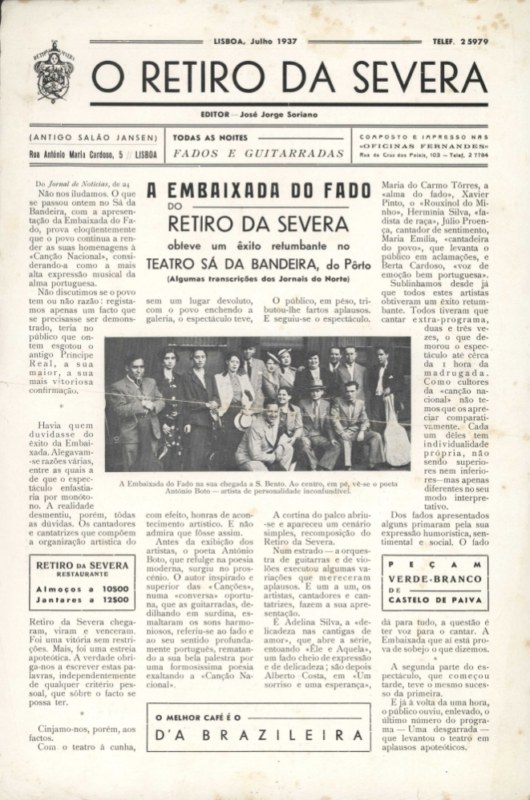Know more:
Berta Cardoso
(N. 21 October, 1911 - M. 12 July, 1997)Berta dos Santos Cardoso, who adopted the artistic name of Berta Cardoso, was born in Lisbon at Rua da Condessa (in the Carmo district), on the 21 October 1911. Her parents, Américo Melande Cardoso and Rosalina Jorge dos Santos, already had four children from previous marriages, two boys and two girls.
At 9 she became an orphan of her father and her education was assigned to an official institution. She was therefore separated from her mother and brothers. Only when Berta Cardoso managed to ensure her economic independence did she have her mother with her again.
One of her brothers, Américo dos Santos, was an amateur Spanish guitar player and persuaded her to perform. At 16 she made her debut at the Salão Artístico de Fados, in Parque Mayer (1927). This performance was so successful that she was immediately hired to remain there as a singer.
Also in 1927 Berta Cardoso was the mother of a boy, called Humberto, who tragically died in Mozambique in 1959, where he lived with his father, at only 26 years-old. She never married, but had another son, called Américo.
At a time when fado began to be sung at the vaudeville “Revista” theatre by professional singers and no longer by the actors and actresses that performed in the plays, Berta Cardoso became one of the fado singers who made a career in this type of show.
Two years after her debut at the Salão Artístico de Fados, the singer had her première in vaudeville "Ricócó" in 1929, at Teatro Maria Vitória, in Parque Mayer. In this theatre she also performed in other shows, such as "Viva o Jazz!" and "A Nau Catrineta", in 1931.
Throughout her professional life she managed to combine vaudeville shows with Fado performances. In 1932, for example, she joined the cast of Salão Jansen and, in that same year, was invited to join the Companhia Maria das Neves. She joined a cast whose main star was Beatriz Costa and left for a months-long tour to Brazil. Her performances were so successful that many Brazilian newspapers underscored her way of singing and her warm reception by the audiences.
In the mid 1930’s she was already a key figure in the Fado universe. She received a lot of press reviews, depicting her, for example, “an artist and a woman who can magnificently express her feelings in all fados, all songs chanted by her majestic throat, which looks more like a rosary of music notes, played at some godly rythm, than a human voice " (Cf. "Canção do Sul", 16 January 1936).
Like Ercília Costa, Berta Cardoso played a key role in the first period of internationalisation of the Fado, having toured to Brazil and the Portuguese islands and colonies. Witness to this approach to new markets is not only the tour to Brazil with the Companhia Maria das Neves, but also the grouping with other famous singers for a long tour to African land.
The "Grupo Artístico de Fados", formed by fado singers Berta Cardoso and Madalena de Melo, and by musicians Armando Augusto Freire (Armandinho), Martinho d’ Assunção Junior and João da Mata, was created in this context in the following year, 1933.
This group of renowned singers and musicians left aboard ship Niassa for a show tour to Western and Eastern Africa, also calling the Portuguese Atlantic islands. This was the first trip to Africa made by the Fado. The tour was widely publicized by the press, as the shows lasted almost one year and took place in different countries, namely Angola, Mozambique and Rhodesia.
Both the general public and the press were very fond of fado singer Berta Cardoso. She made her first recording in 1931, for the Odeon label; its representatives in Lisbon invited her to travel to Madrid for recording together with Cecília de Almeida, accompanied by Armandinho (Portuguese guitar) and Georgino de Sousa (Spanish guitar). In the 1930’s and 1940’s Berta Cardoso continued to record, now for the Valentim de Carvalho label.
Berta Cardoso developed intense activity in the vaudeville “revista” theatre, where she regularly participated in nearly two shows per year. This participation was often mentioned by the Press, namely the newspapers and magazines interested in fado themes, thus registering her fado songs performed in vaudeville plays. These frequent reviews enabled her to remain well-known to both the public and the critics.
From 1936 to 1938 Berta Cardoso performed in several vaudeville plays, in different theatres. In spite of her frequent presence on theatre stages and her strong relationship with vaudeville, Berta Cardoso always considered herself a fado singer and continued to perform in the best fado houses of Lisbon – namely at Café Luso, in 1936, and Retiro da Severa, in 1937.
In 1937 the private cast of Retiro da Severa became the "Retiro da Severa Fado Embassy", including outstanding names such as Maria Emília Ferreira, Maria do Carmo Torres, Alfredo Duarte (Marceneiro), Júlio Proença and José Porfírio.
This Embassy travelled to Porto to perform for several days at Teatro Sá da Bandeira and at Teatro Variedades, in Lisbon. Shows always sold out and the newspapers, both in Lisbon and Porto, spoke of a high-quality show and frequently underscored the performances of Berta Cardoso and Alfredo Marceneiro.
In 1939 the Companhia Beatriz Costa, with actress Beatriz Costa as main star, hired the fado singer for a tour to Brazil. They premiered in March at Teatro República, in Rio de Janeiro, featuring the vaudeville play "Eh, Real". They also presented three other vaudeville shows, "Oh, meu rico São João", "Dança da Luta" and "Pega-me ao Colo".
Also in 1939 her colleagues at Retiro da Severa paid tribute to the fado singer. Before boarding to Brazil, she recorded live with Marceneiro, at Teatro Variedades and Retiro do Colete Encarnado. These recordings were presented in the film "Feitiço do Império", by António Lopes Ribeiro. The film premiered at the theatres in 1940 and remained there until 1952.
In 1940, after returning from Brazil, she joined the "Solar da Alegria Fado Embassy", which achieved tremendous success on its trips to Teatro Sá da Bandeira, in Porto. In this cast Berta Cardoso was joined by other famous fado singers, namely Maria Carmen, Júlio Proença and Amália Rodrigues. Also in 1940 Berta Cardoso resumed her theatre activity, participating in the plays "Porto ao Sol", at Teatro Sá da Bandeira, and "Toma Lá Cerejas!", premiered at Teatro Pax-Julia with the Companhia do Teatro Apolo.
Later on the fado singer joined the cast of company Monumental, as top figure of the cast (Cf. "Guitarra de Portugal", 25 December 1945), and performed in Lisbon and Porto. In the following years Berta Cardoso travelled to Madeira in 1947 and performed at Cine-Jardim and in 1948 she performed at the play "Isto é o Porto", on the stage of Teatro Sá da Bandeira, in Porto.
Vaudeville play "Lisboa é Coisa Boa", by Eduardo Fernandes and Ricardo Covões, premiered in February 1951 at Coliseu dos Recreios, on the very same day her mother’s funeral. Her professionalism was publicly acknowledged, for not having failed to perform in spite of such painful event.
In February 1951, Berta Cardoso also obtained her professional card, registering as "Drama Artist". From 1960 onwards, however, the singer decided to finally quit the stages of the vaudeville “revista” theatre.
She continued her career as fado singer and her recordings, made for the Estoril label in the 1950’s and 1960’s. Many decades later, in 1992, this same label launched CD "Orquestra de Guitarras", a special edition, numbered and autographed, which included six of her most successful fado songs.
From then on Berta Cardoso increasingly restricted her artistic activity to fado houses, namely O Faia, where her colleagues and friends paid her a well-deserved tribute in 1954.
As from 1961 and until the end of the next decade, Berta Cardoso was a member of the cast of fado house Viela, which also paid her tribute in 1967.
A renowned figure as singer of traditional fado, Berta Cardoso also performed at television. Special reference should be made to her presence, in 1969, at the large-audience programme "Zip, Zip", and the broadcasting of her anniversary on the programme "Bodas de Ouro de uma Fadista".
Berta Cardoso put an end to her career in 1982, performing at the Poeta – a venue opened that year by poet José Luís Gordo and his wife, fado singer Maria da Fé.
In 1943 the fado singer finished her nursing degree at the Medical School of Lisbon, specialising in obstetrics. Several newspapers and magazines therefore announced that she would retire from the Fado stages, although that never happened. Berta Cardoso never became a practicing nurse and she remained very active as a professional fado singer until 1982.
In 1996 Berta Cardoso had to be moved to a home for the elderly of Santa Casa da Misericórdia after being diagnosed a degenerative condition of the nervous system at a very advanced stage, which required permanent care and monitoring. She died at that home on the 12 July 1997.
Several CDs with her recordings were published after her death, namely "The Story of Fado", by the Hemisphere label, in 1997, "Portugal, Fado: Chant de l’âme", by Éditions du Chêne, in 1998, "Berta Cardoso, Márcia Condessa e Adelina Ramos", in the collection "Fados do Fado", by the Movieplay label, in 1998 and also by the same label volume 1 of collection "Fado Português", published in 1999.
In recognition of Berta Cardoso as an iconic figure of traditional Fado, with a long career always associated with this form of urban song and representative of a very typical period in the History of Fado, the Museu do Fado has organised a temporary exhibition focused on this fado singer.
Source:
"Guitarra de Portugal", 30 October 1930;
"Guitarra de Portugal", 24 June 1933;
"Canção do Sul", 16 January 1936;
"Guitarra de Portugal", 27 August 1937;
"Guitarra de Portugal", 10 May 1938;
"Canção do Sul", 1 December 1939;
"Guitarra de Portugal", 25 December 1945;
"Ecos de Portugal", 1 October 1948;
Brito, Joaquim Pais de (Dir.), 1994, “Fado: Vozes e Sombras”, Lisboa, Lisboa94/ Electa;
Pereira, Sara (Dir), 2006, "Berta Cardoso", Lisboa, EGEAC/ Museu do Fado.
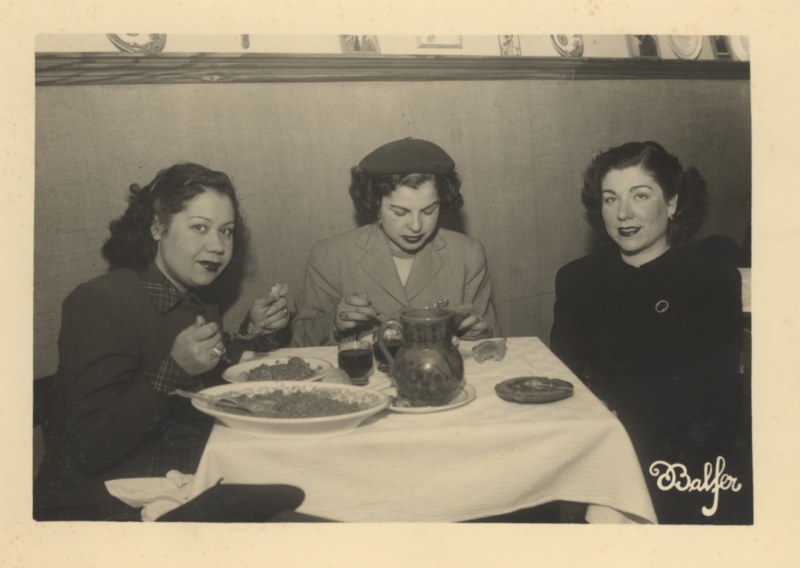
Berta Cardoso e Lucília do Carmo, anos 40
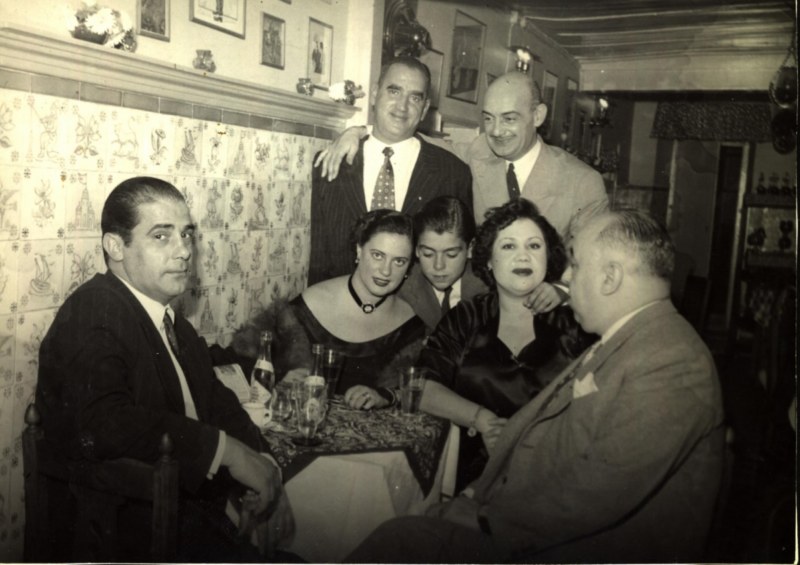
Carlos Ramos, Mendes Leite, Aura Ribeiro, Carlos do Carmo, Berta Cardoso, Alberto Ascenção Almeida, Faia, anos 40
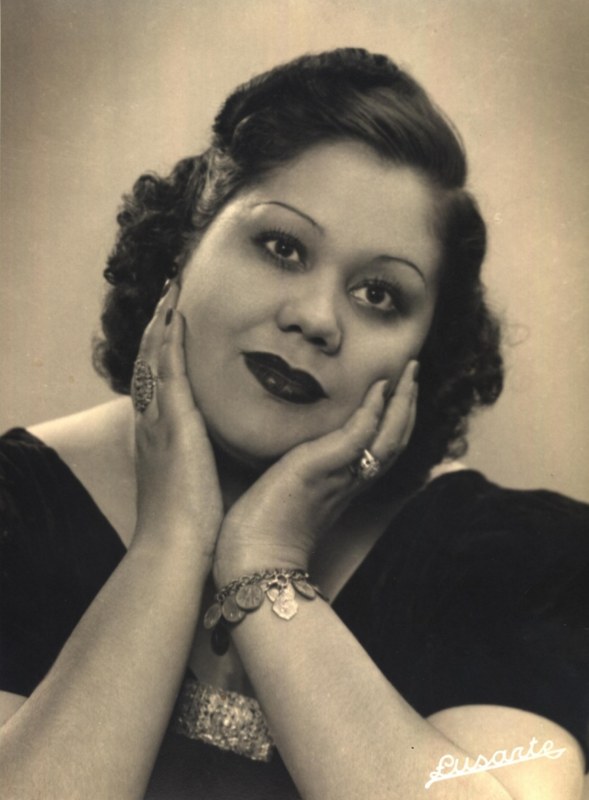
Berta Cardoso, 1943
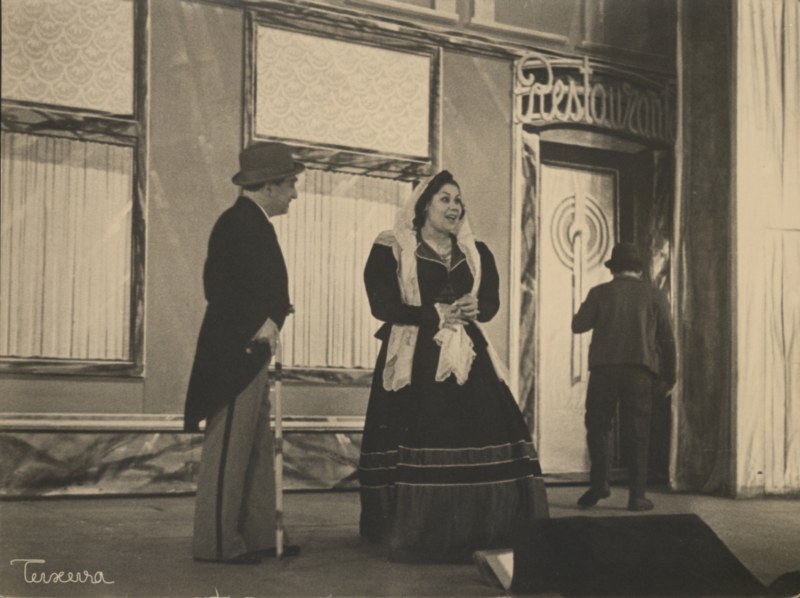
Berta Cardoso, s/d
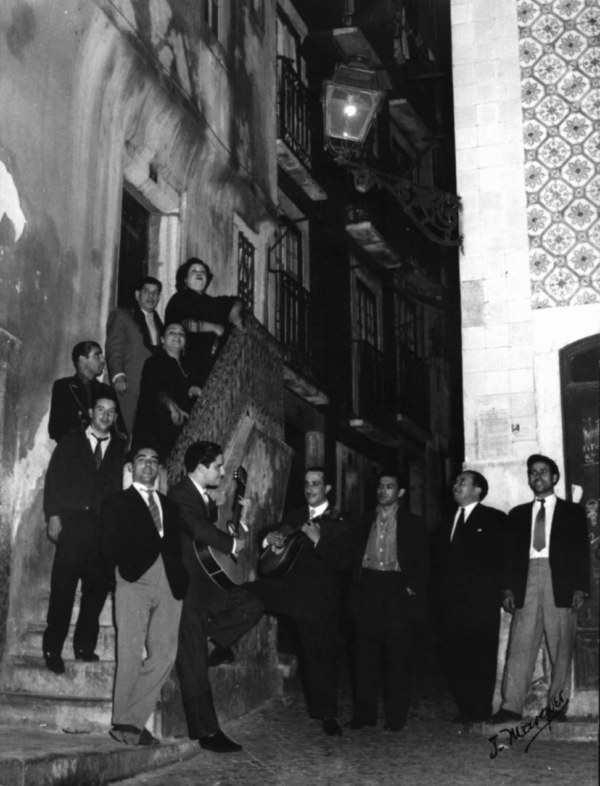
Berta Cardoso, Alfredo Marceneiro, Lina Maria Alves, Francisco Perez Andión, Acácio Rocha, Alfama, Lisboa, anos 50
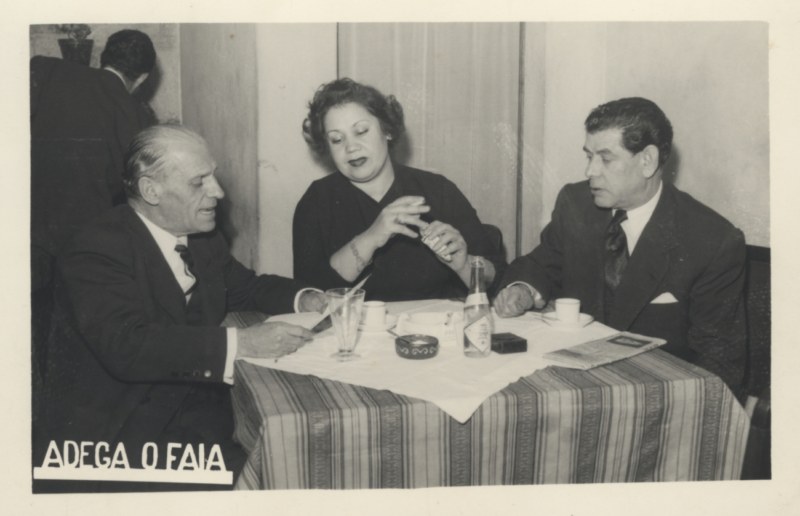
Linhares Barbosa, Berta Cardoso e Alfredo Marceneiro Faia, anos 50
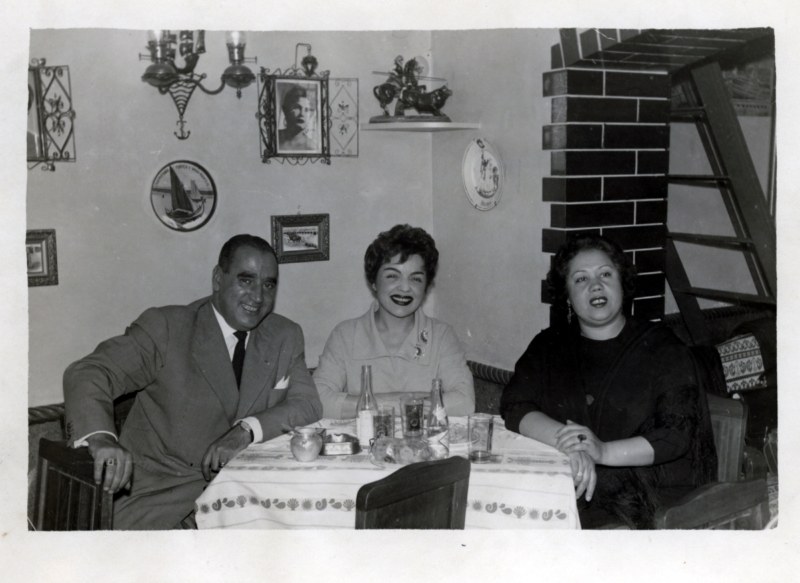
Carlos Ramos, Beatriz Costa e Berta Cardoso, Parreirinha de Alfama, s/d
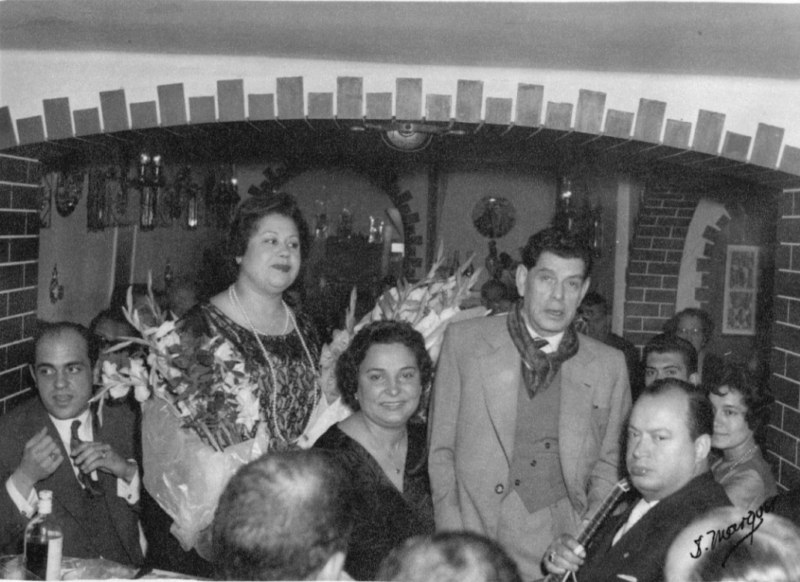
Berta Cardoso, Lina Maria Alves, Alfredo Marceneiro e Acácio Gomes, Parreirinha de Alfama, anos 50

Berta Cardoso, Maria Carmen, Lina Maria Alves e Manuel Fernandes, Parreirinha de Alfama, anos 50
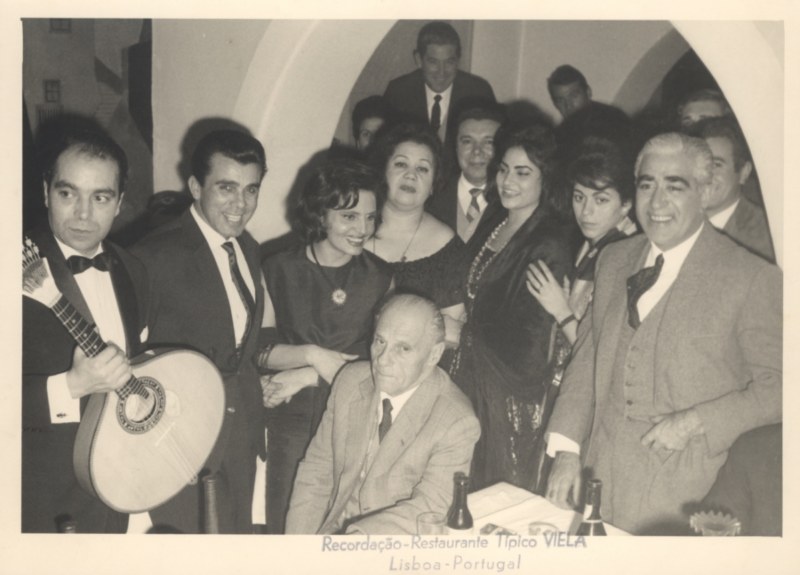
Domingos Camarinha, Sérgio, Amália Rodrigues, Berta Cardoso, Esmeralda Amoedo e Linhares Barbosa, Viela, anos 60
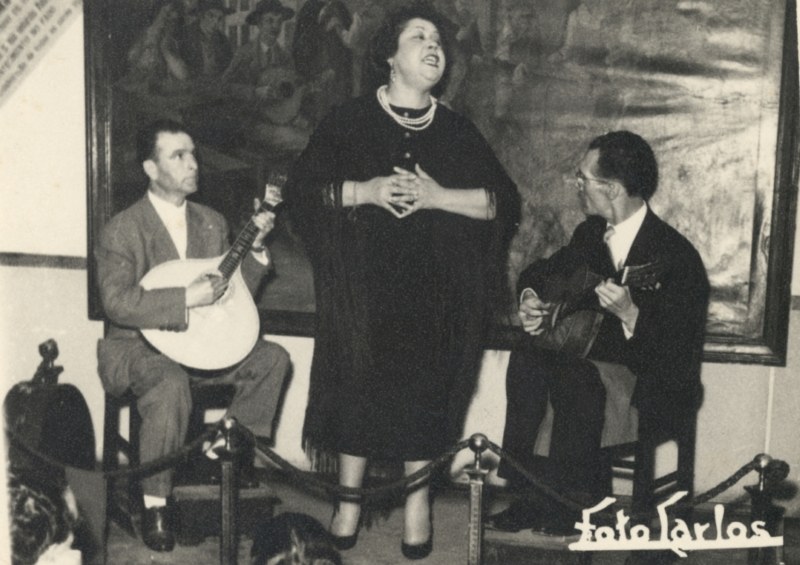
Berta Cardoso, Liberto Conde, Júlio Gomes, Luso, 1958
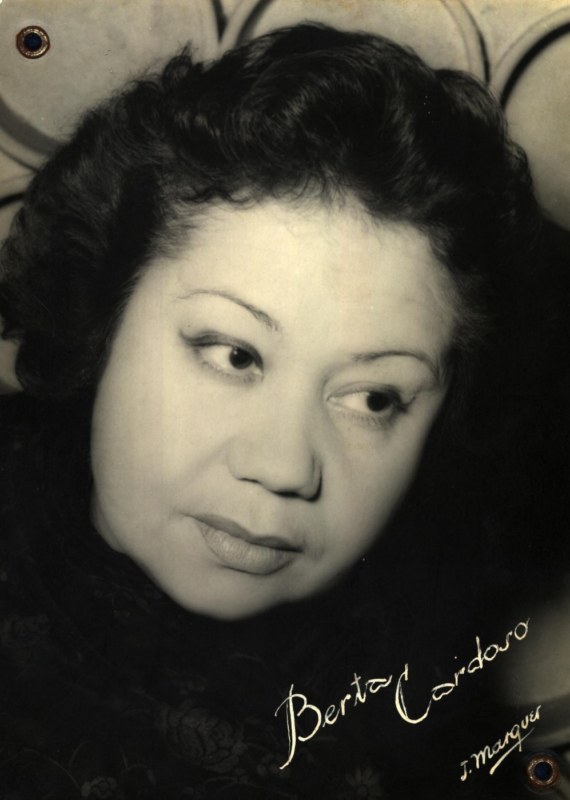
Berta Cardoso, anos 60
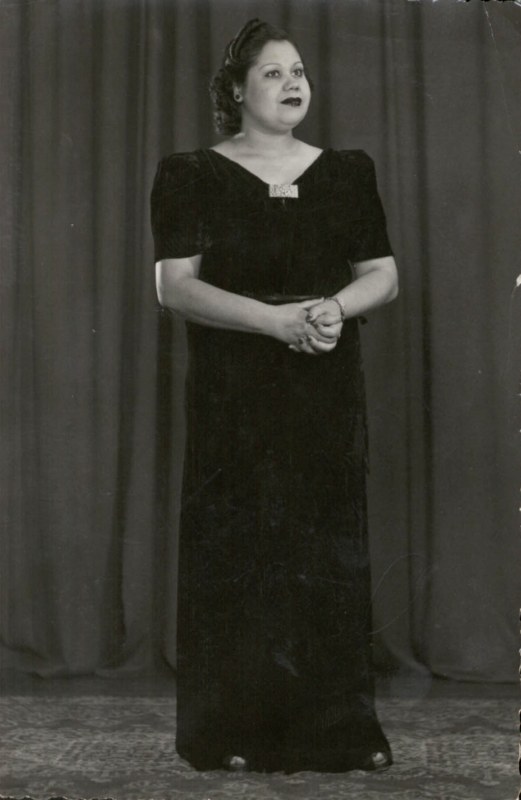
Berta Cardoso, s/d
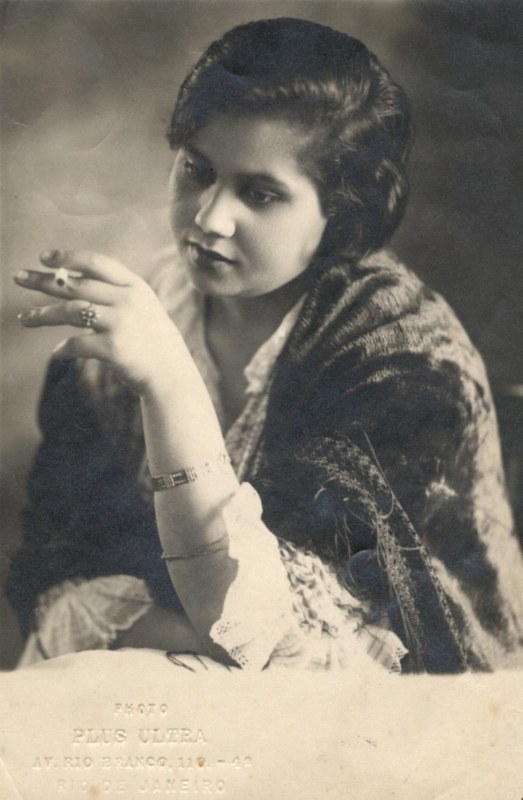
Berta Cardoso, Rio de Janeiro, Brasil, 1932

Berta Cardoso e Santos Moreira, Brasil, 1932
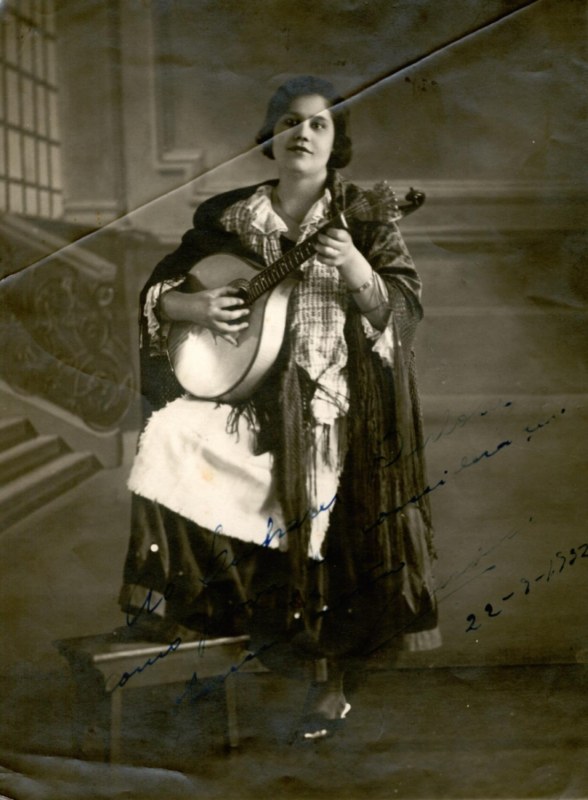
Berta Cardoso, Rio de Janeiro, Brasil, 1932
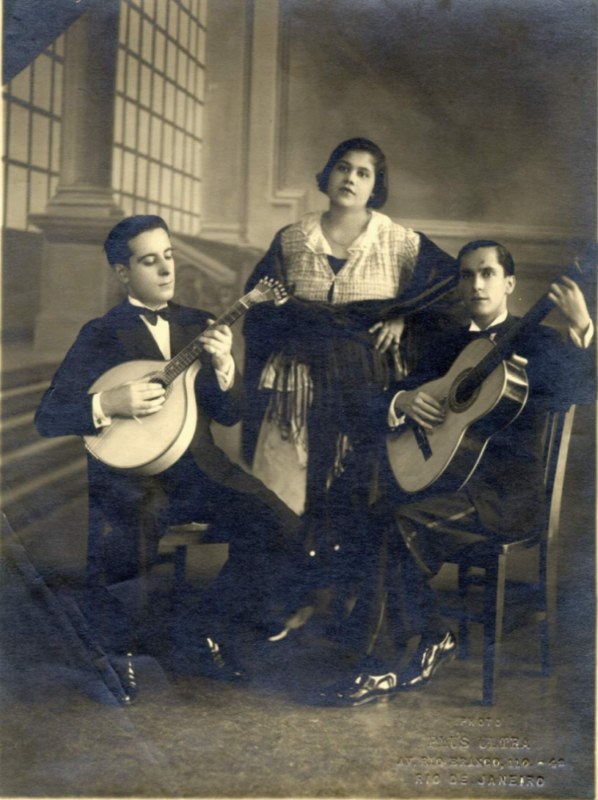
Berta Cardoso, João Fernandes e Santos Moreira, Rio de Janeiro, Brasil, 1932
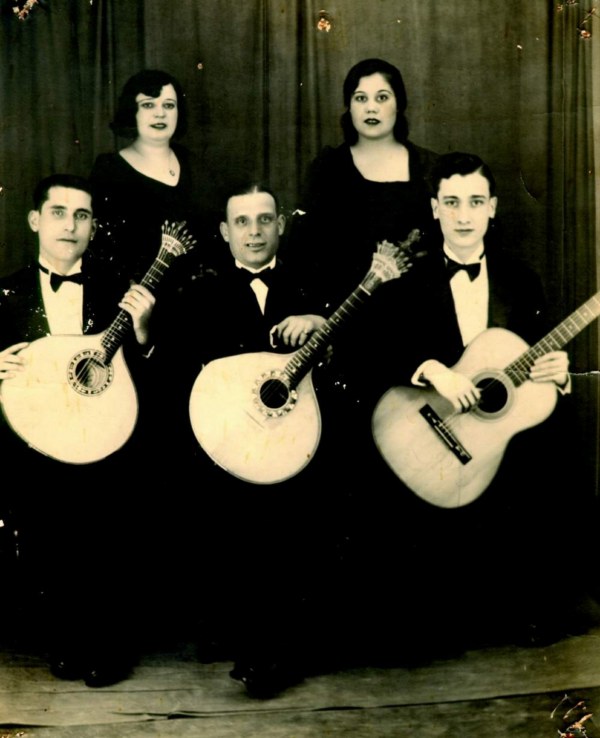
João da Mata, Madalena de Melo, Armandinho, Berta Cardoso e Martinho d`Assunção, Grupo Artístico de Fados, 1933
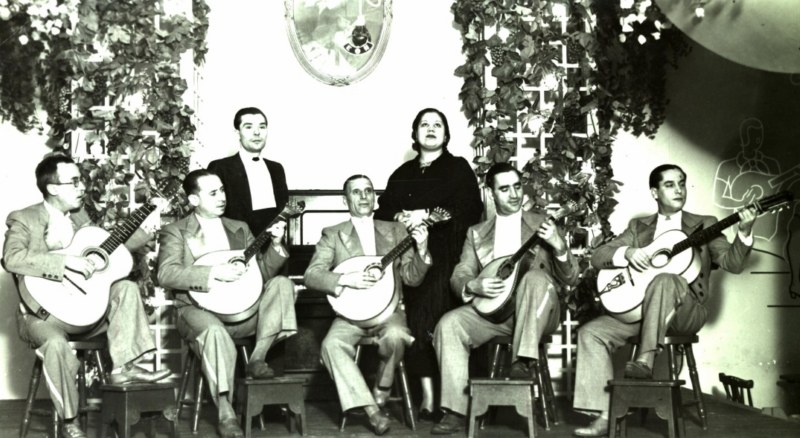
Júlio Proença, Berta Cardoso, José Marques, Armandinho, Carlos Ramos, Santos Moreira, transmissão para a Emissora Nacional, Retiro da Severa, anos 30
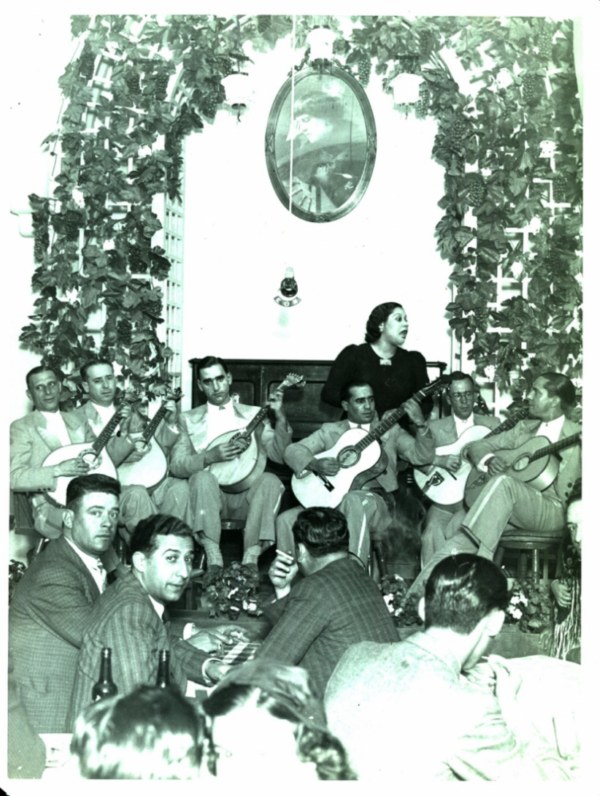
Armandinho, José Marques, Carlos Ramos, Berta Cardoso, Abel Negrão e Santos Moreira, transmissão para a Emissora Nacional, Retiro da Severa, anos 30
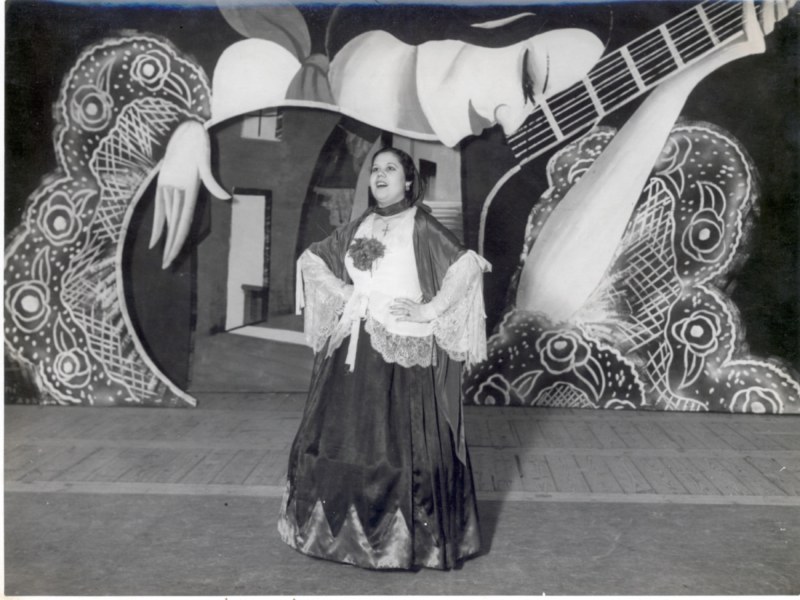
Berta Cardoso, Revista Cartaz de Lisboa, 1937
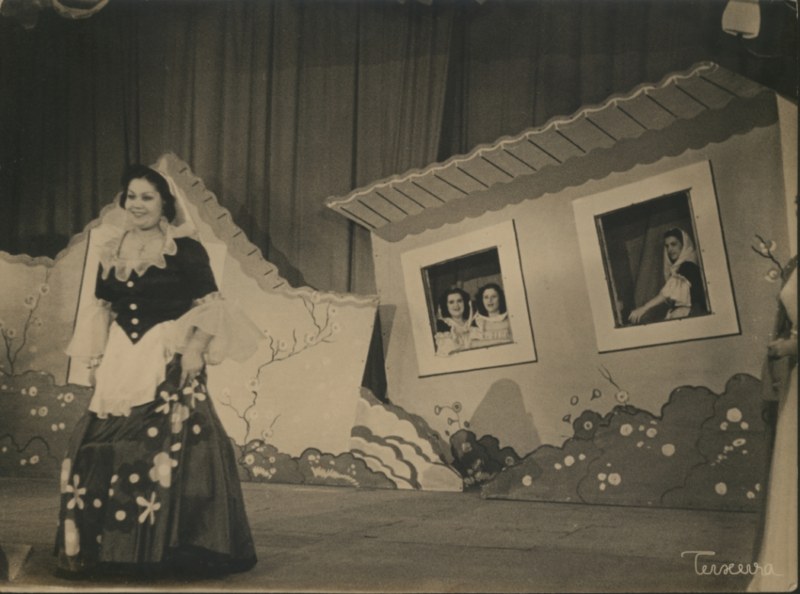
Berta Cardoso, Revista Janelas de Lisboa, anos 30
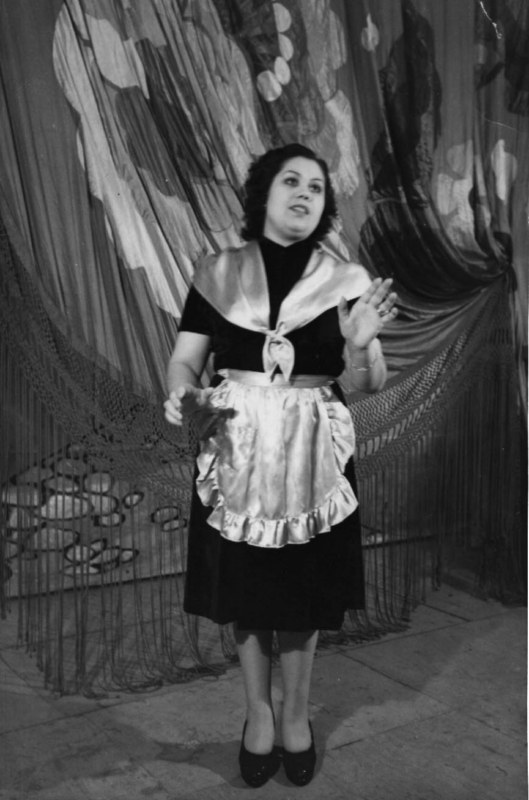
Berta Cardoso, Revista Manda Ventarolas, 1941
-
Tia Macheta Berta Cardoso (João Linhares Barbosa / Manuel Dias Soares)
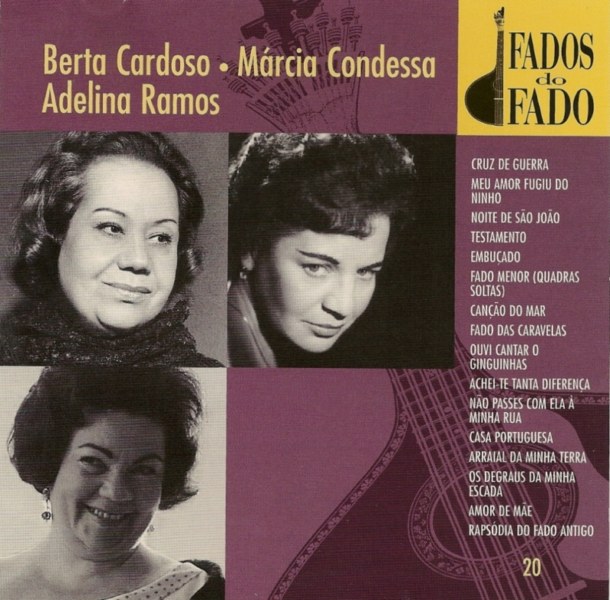
Berta Cardoso/ Márcia Condessa/ Adelina Ramos, Fados do Fado, Movieplay, 1998
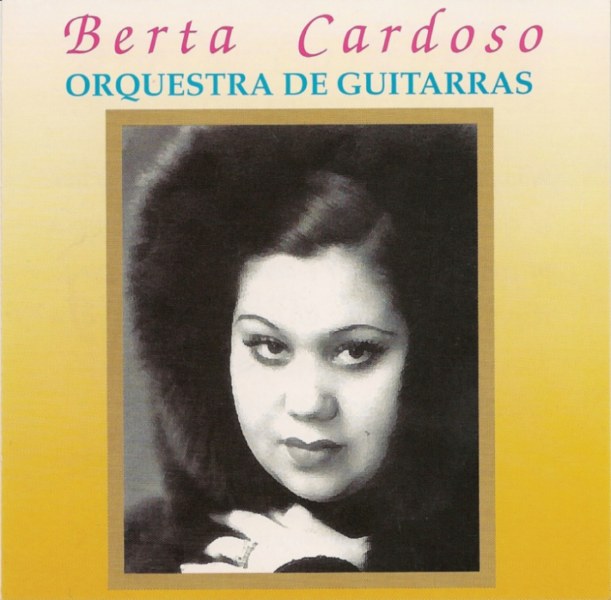
Berta Cardoso, Orquestra de Guitarras, Estoril, 1992
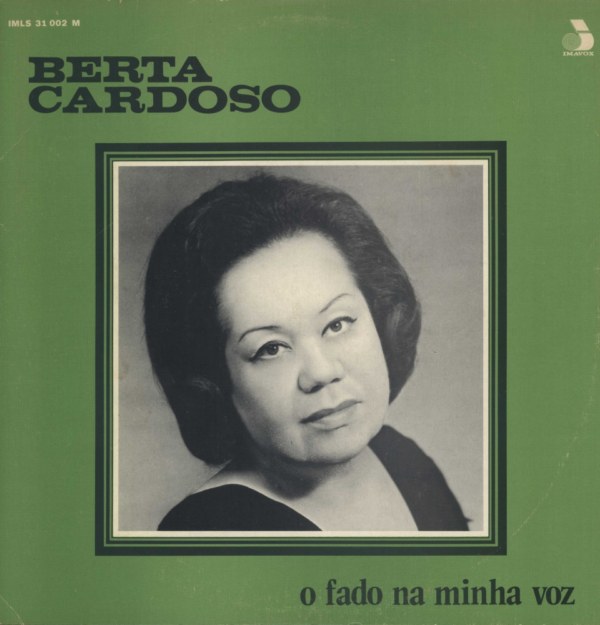
Berta Cardoso, O Fado na Minha Voz, LP Imavox, 1978
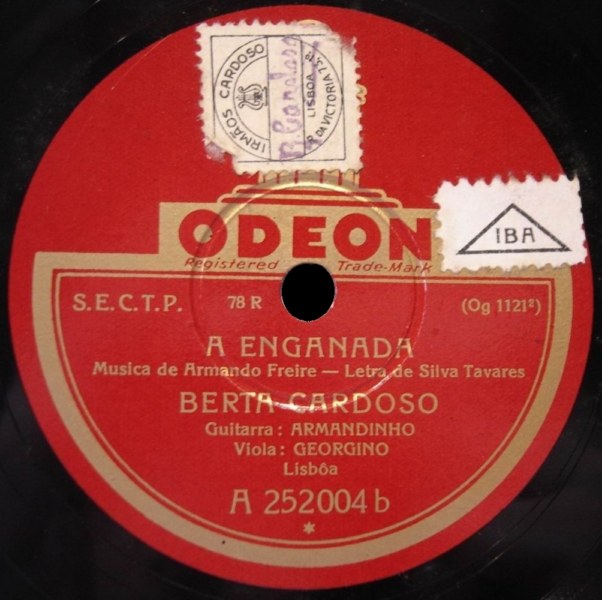
Berta Cardoso, A Enganada, 78rpm Odeon 25004
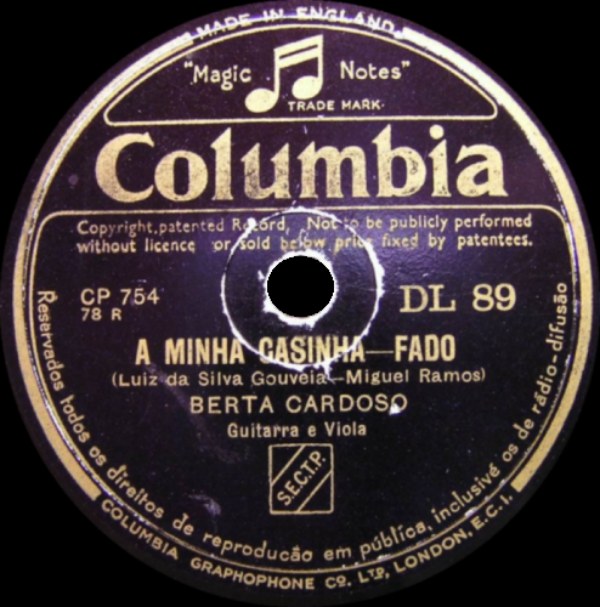
Berta Cardoso, A Minha Casinha, 78rpm Columbia DL 89
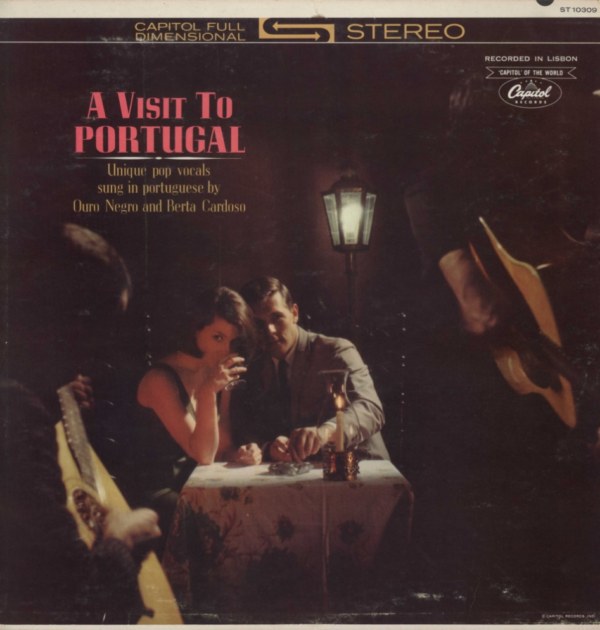
Berta Cardoso, A Visit to Portugal, LP Capitol

Berta Cardoso, Cruz de Guerra, 78 rpm Columbia DL 78
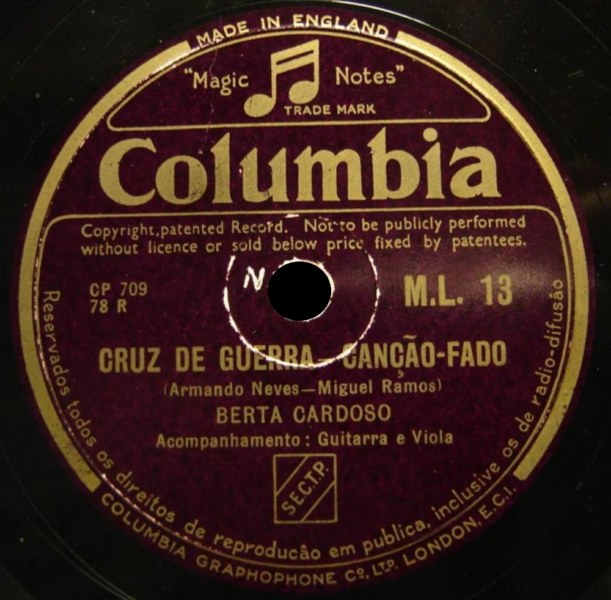
Berta Cardoso, Cruz de Guerra, 78 rpm Columbia ML 13
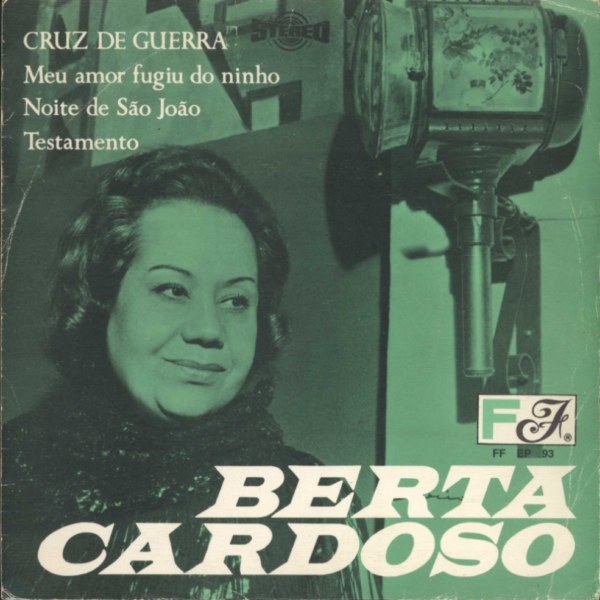
Berta Cardoso, Cruz de Guerra, EP Riso e Ritmo Discos, Lda
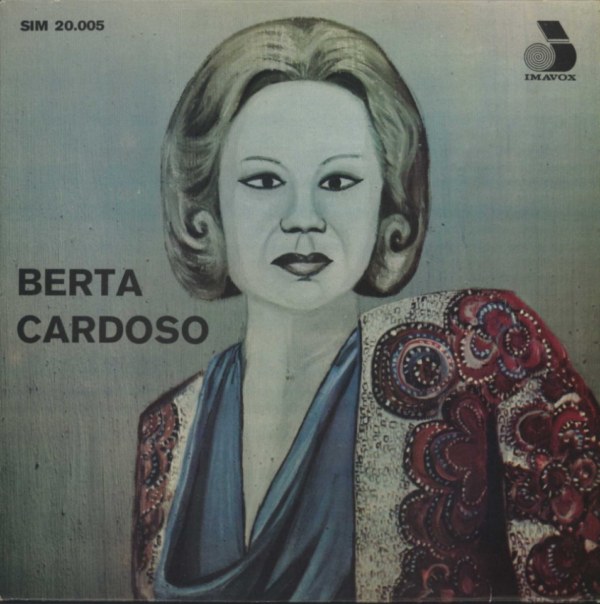
Berta Cardoso, EP Imavox SIM 20005

Berta Cardoso, EP Imavox SIM 20015
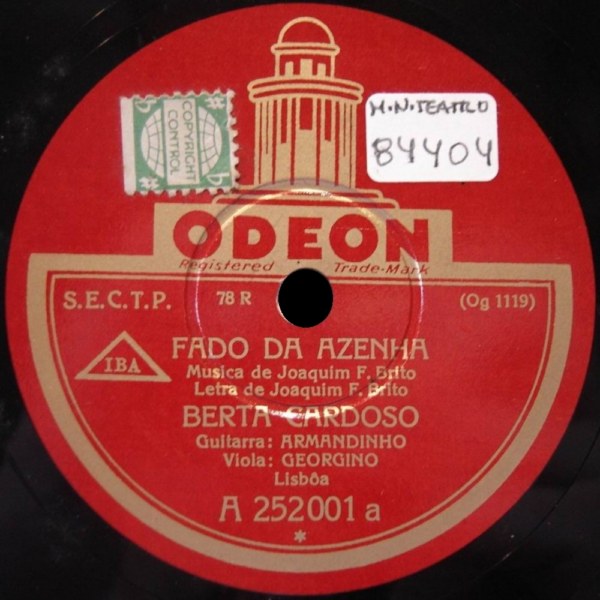
Berta Cardoso, Fado da Azenha, 78rpm Odeon 25001
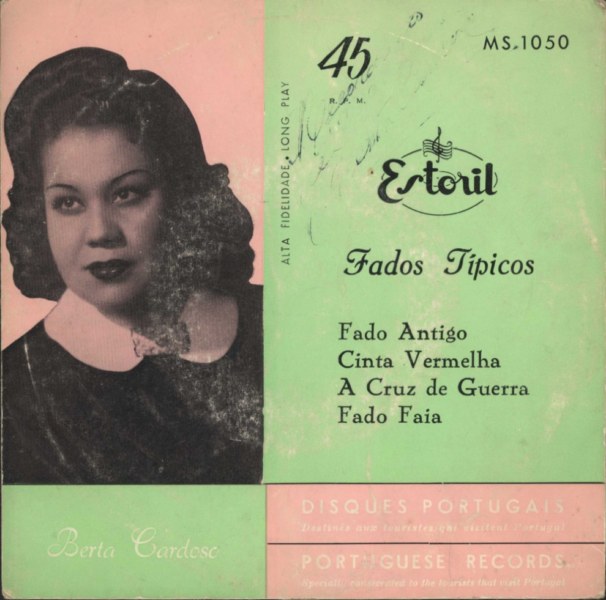
Berta Cardoso, Fados Típicos, EP Estoril
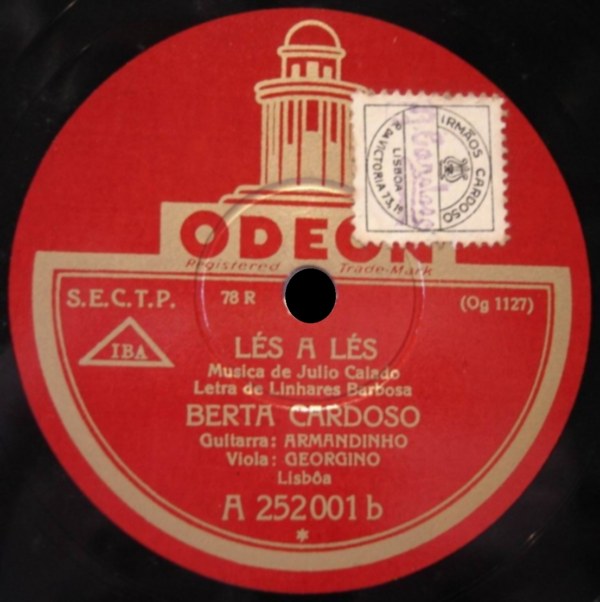
Berta Cardoso, Lés a Lés, 75rpm Odeon 25001
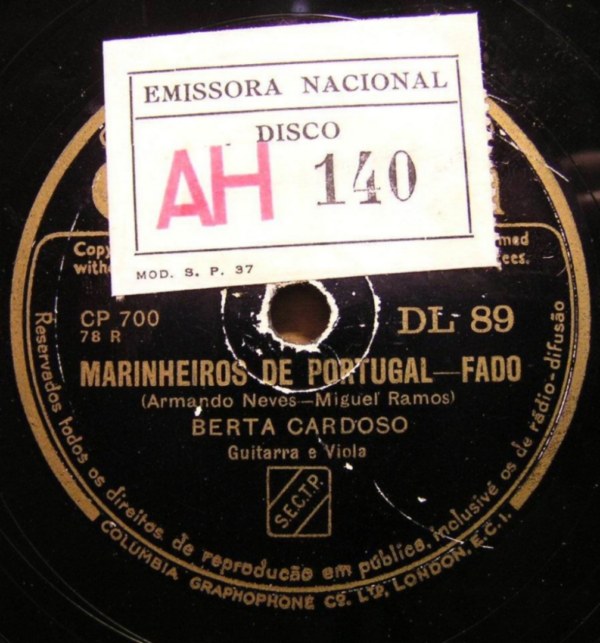
Berta Cardoso, Marinheiros de Portugal, 78rpm Columbia DL 89
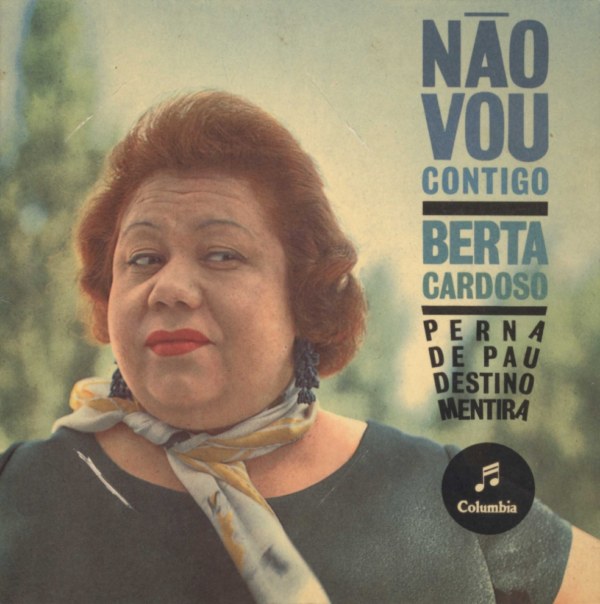
Berta Cardoso, Não Vou Contigo, EP Columbia
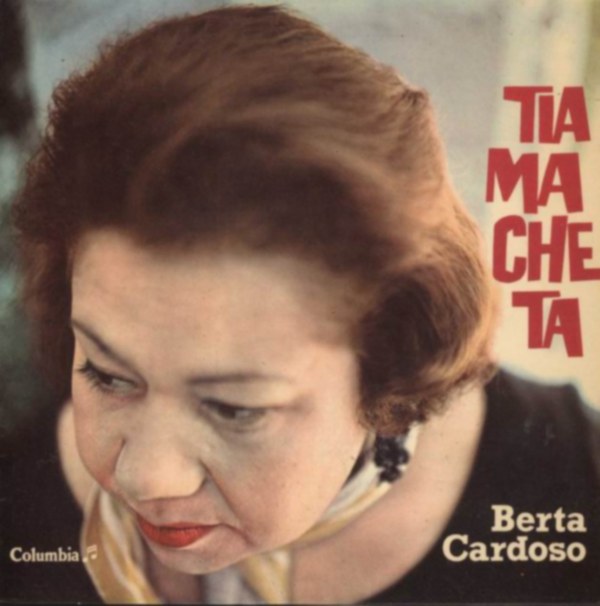
Berta Cardoso, Tia Macheta, EP Columbia
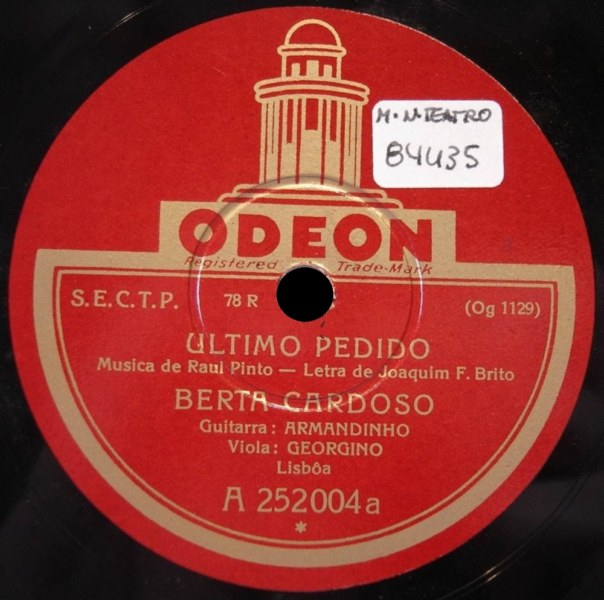
Berta Cardoso, Último Pedido, 78 rpm Odeon 25004
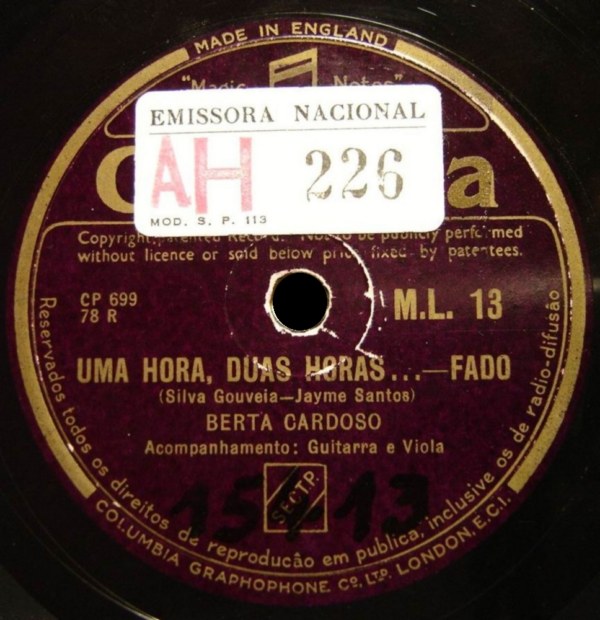
Berta Cardoso, Uma Hora, Duas Horas, 78 rpm Columbia ML 13
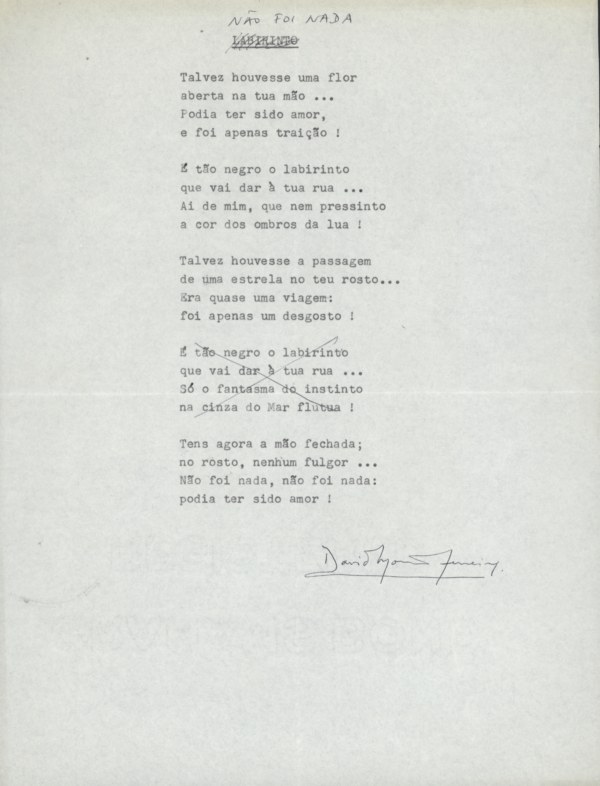
Anúncio Publicitário | Advertisement, Casa Odeon, s/d.
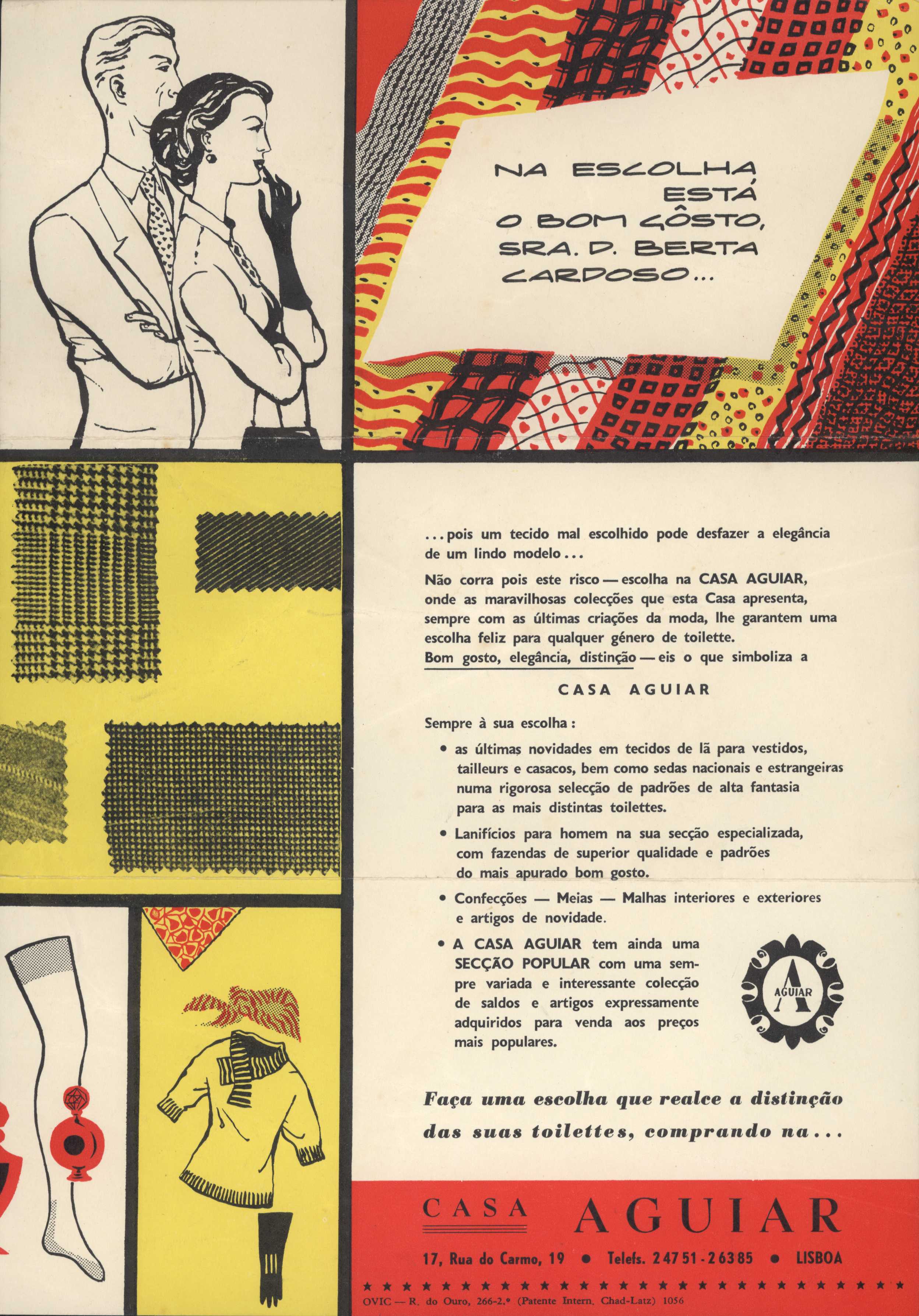
Berta Cardoso, anúncio publicitário | advertisement Casa Aguiar, s/d.
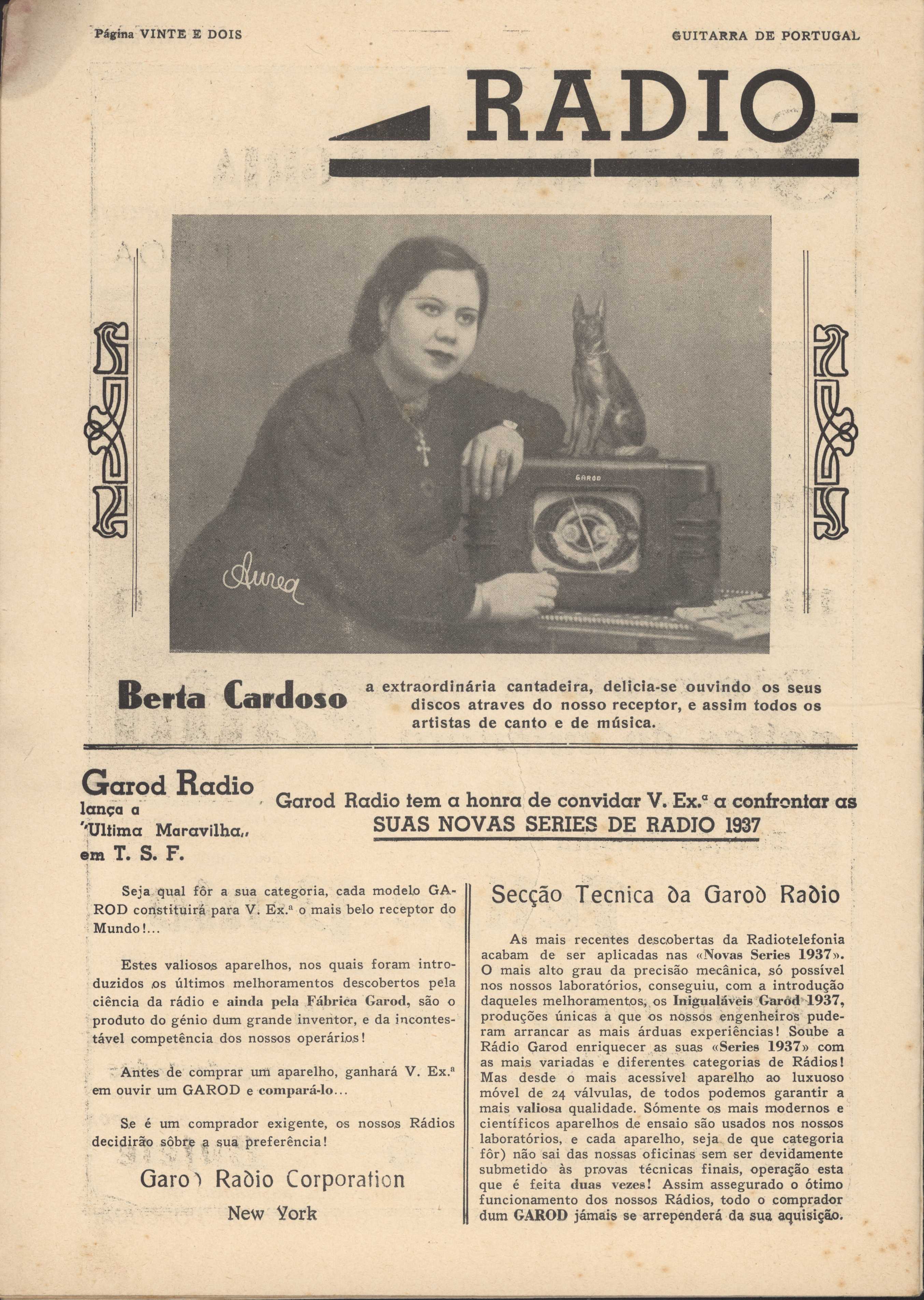
Berta Cardoso, anúncio publicitário | advertisement Garod Radio Corporation, Guitarra de Portugal, Déc. 1930
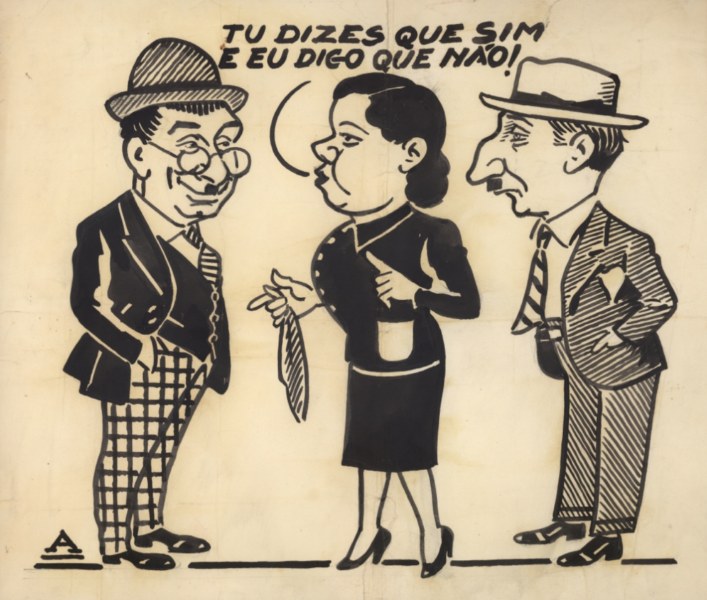
Caricatura | Cartoon de Berta Cardoso, Amarelhe, s/d.
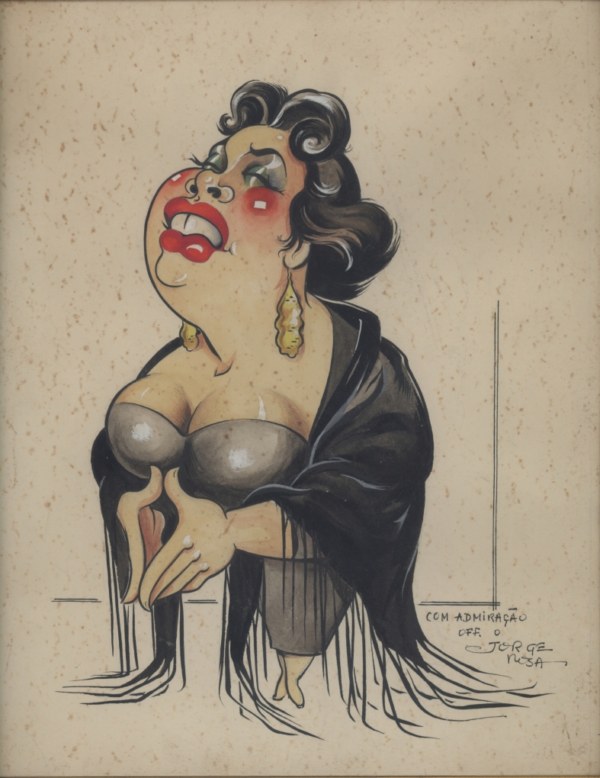
Caricatura | Cartoon de Berta Cardoso, Jorge Rosa, s/d.
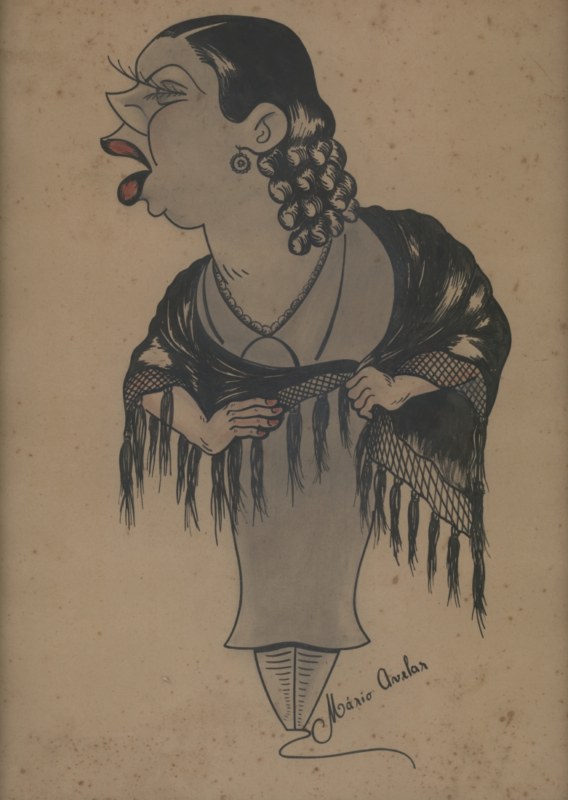
Caricatura | Cartoon de Berta Cardoso, Mário Avelar, s/d.
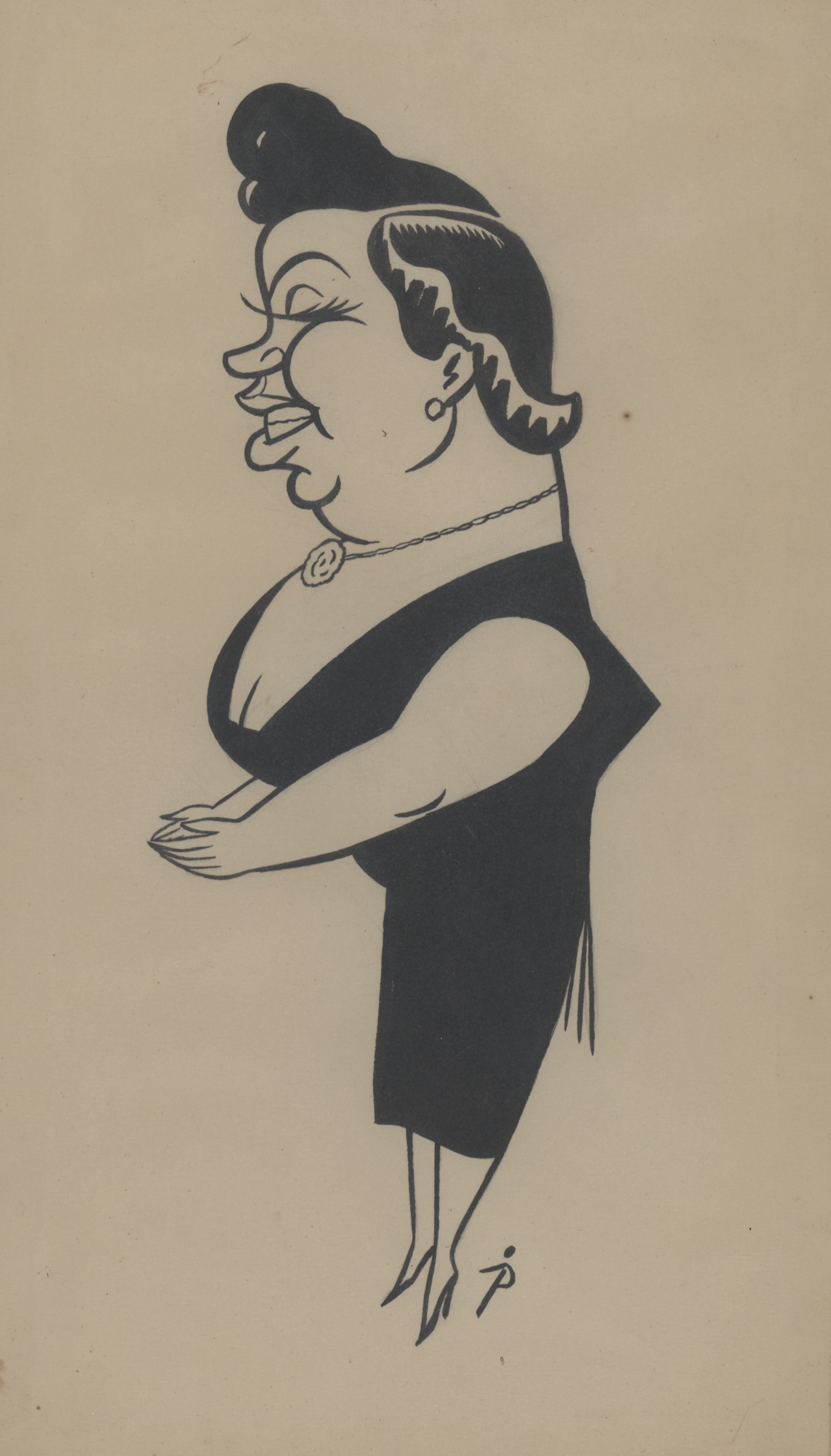
Caricatura | Cartoon de Berta Cardoso, P., s/d.
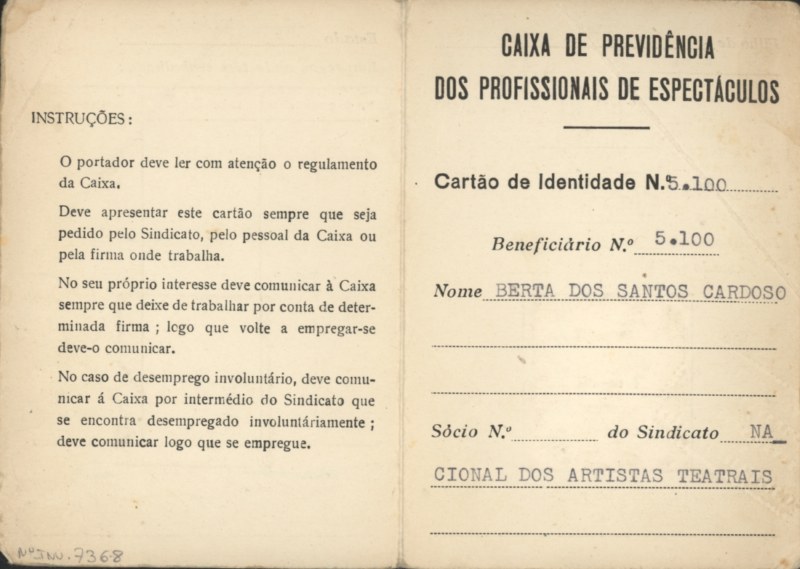
Cartão Caixa de Previdência | Social Welfare Identity Card de Berta Cardoso, 1945

Cartão Caixa de Previdência | Social Welfare Identity Card de Berta Cardoso, 1945
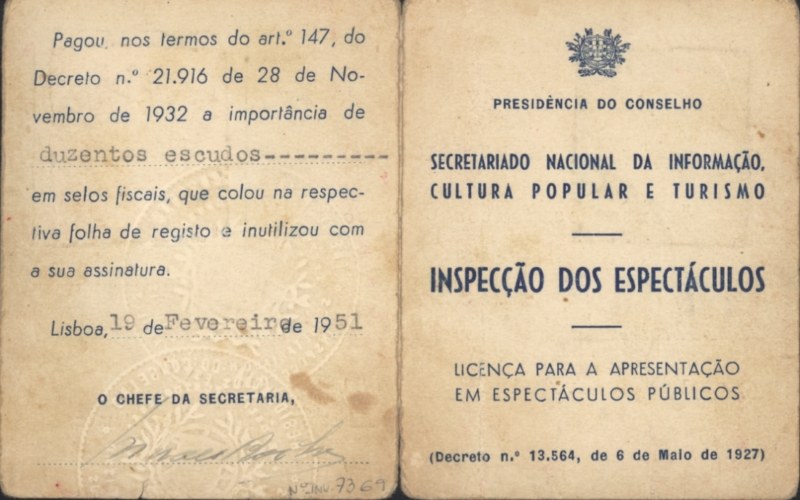
Carteira Profissional | Professional Card, Berta Cardoso, 1951
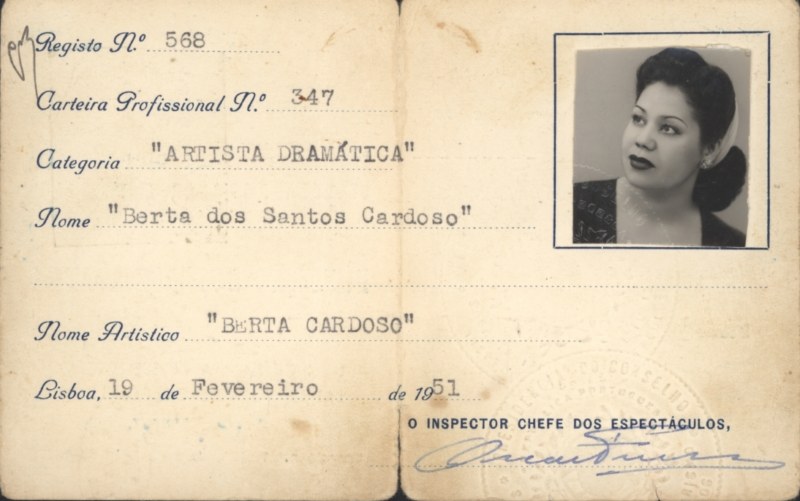
Carteira Profissional | Professional Card, Berta Cardoso, 1951

Certidão de Nascimento | Birth Certificate, Berta Cardoso, 1929, p.1
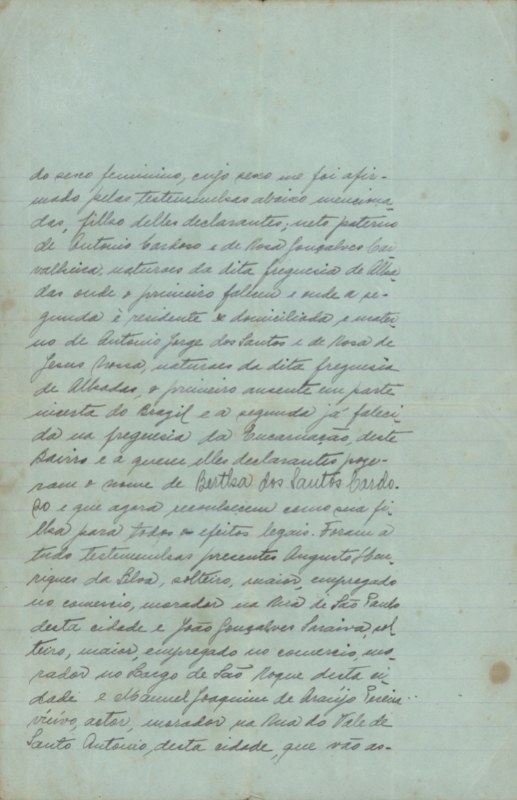
Certidão de Nascimento | Birth Certificate, Berta Cardoso, 1929, p.2
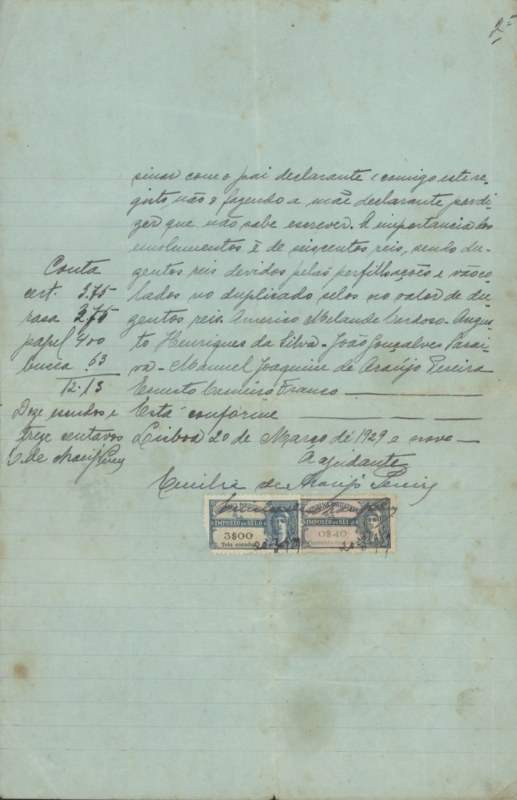
Certidão de Nascimento | Birth Certificate, Berta Cardoso, 1929, p.3
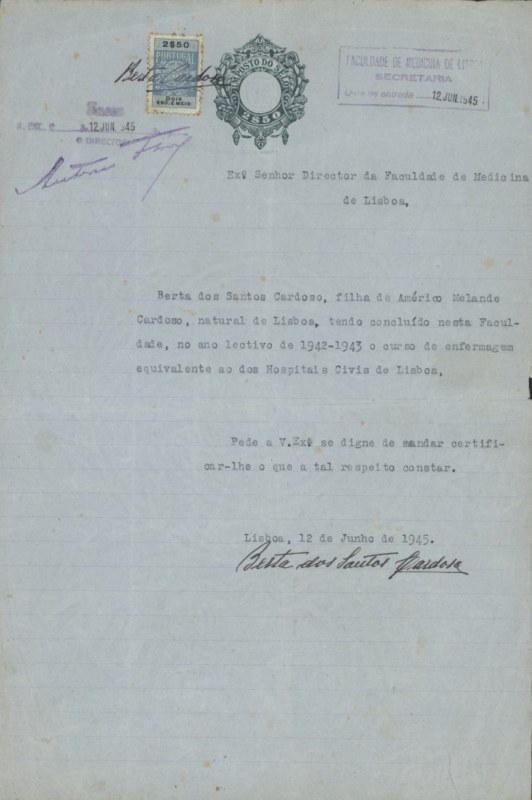
Diploma de Enfermagem | Nursing Diploma, Berta Cardoso, 1945, p.1
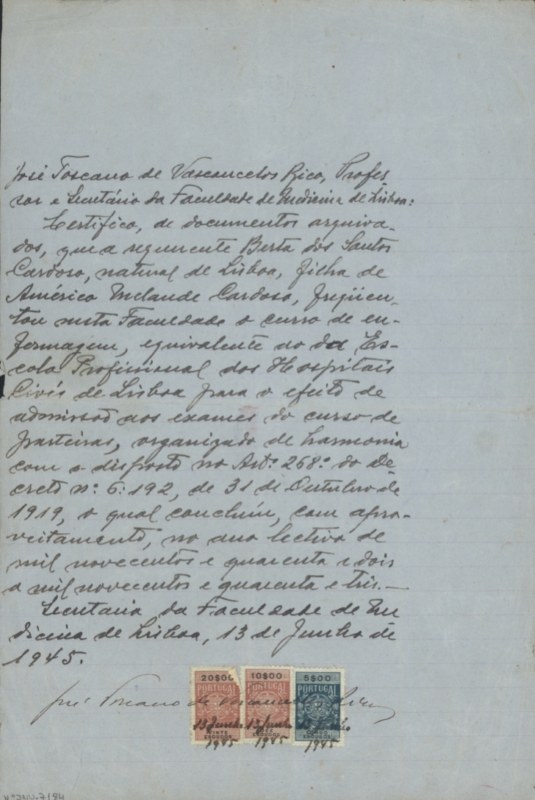
Diploma de Enfermagem | Nursing Diploma, Berta Cardoso, 1945, p.2
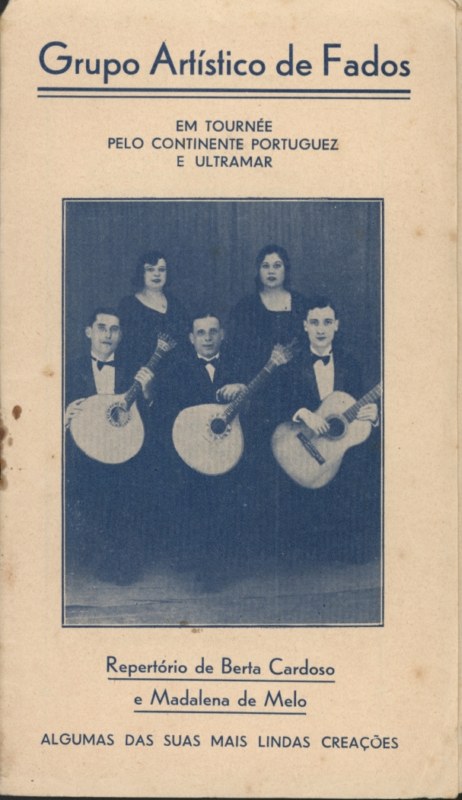
Folheto de Repertórios | Song Lyrics Brochure, Grupo Artístico de Fados, s/d.
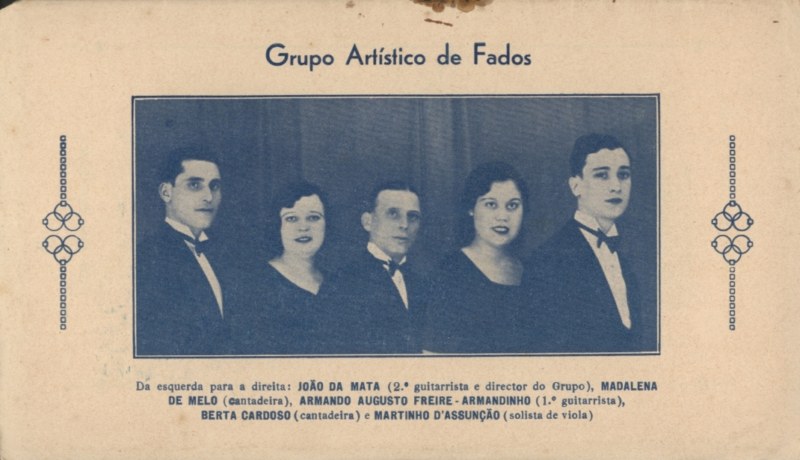
Folheto de Repertórios | Song Lyrics Brochure, Grupo Artístico de Fados, s/d.
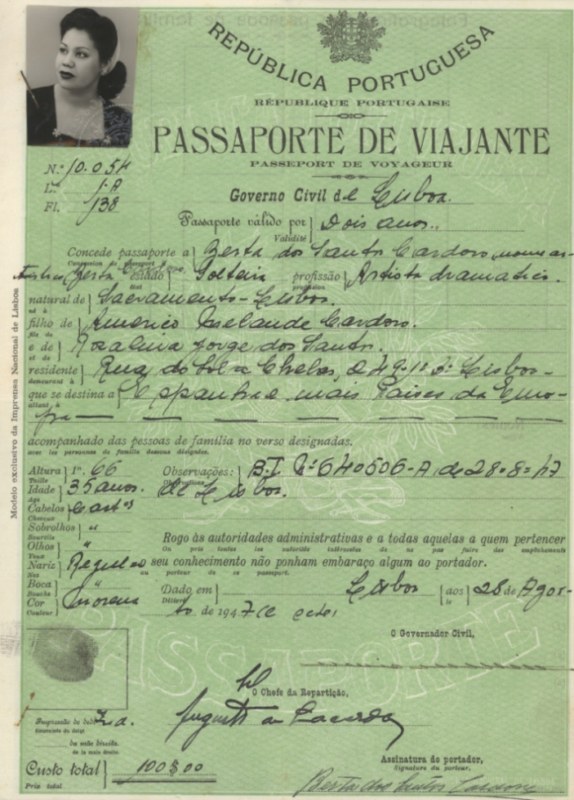
Passaporte de Berta Cardoso, 1947, p.1
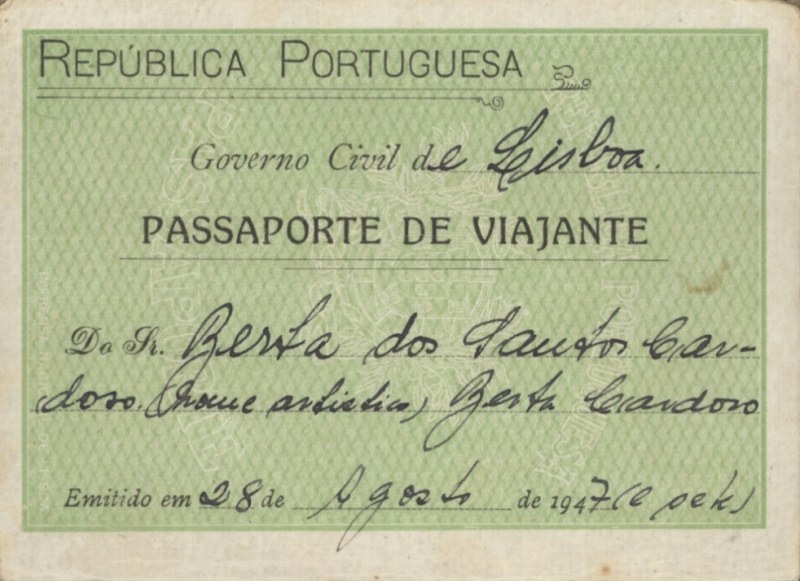
Passaporte de Berta Cardoso, 1947, p.2
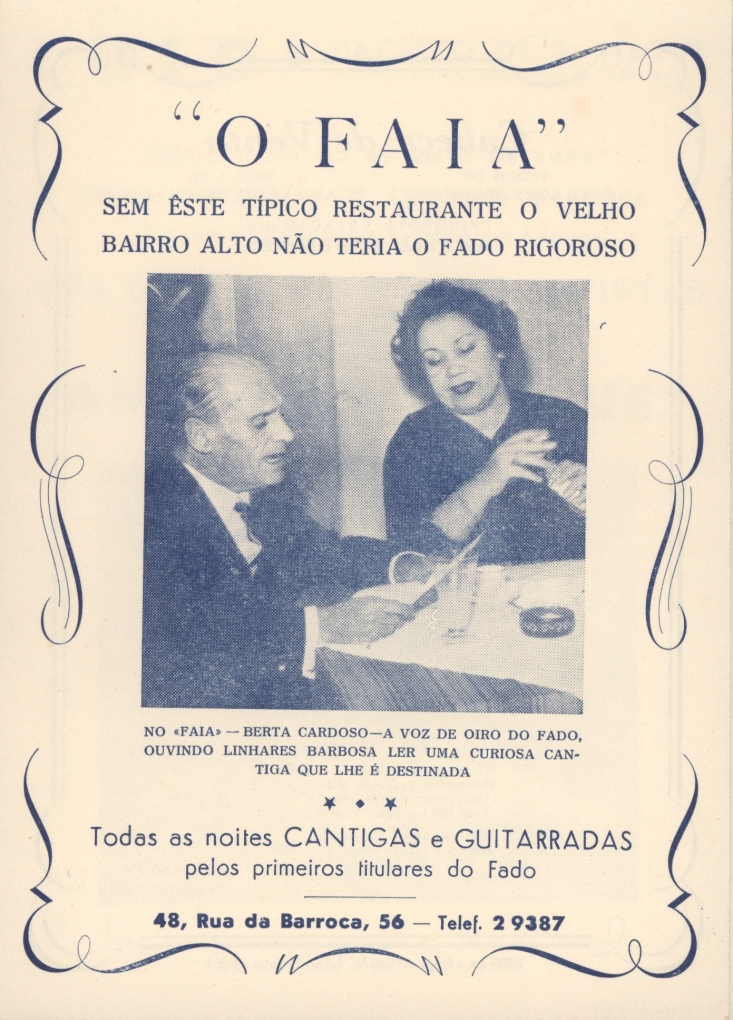
Programa | Program Luso, 1954, p.1
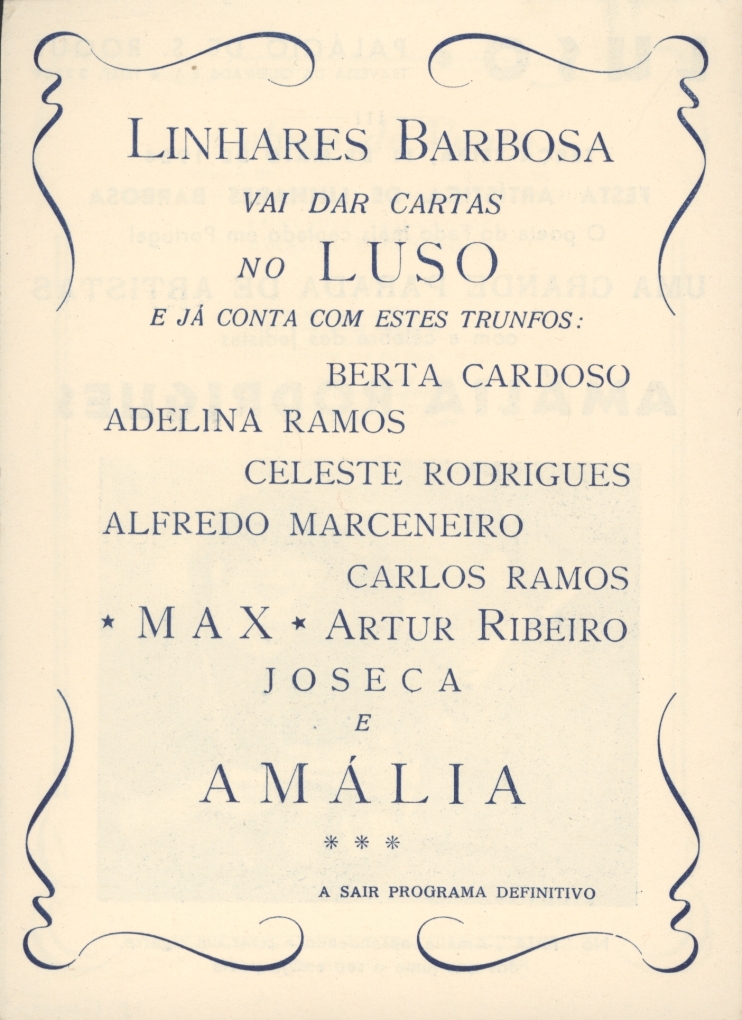
Programa | Program Luso, 1954, p.3
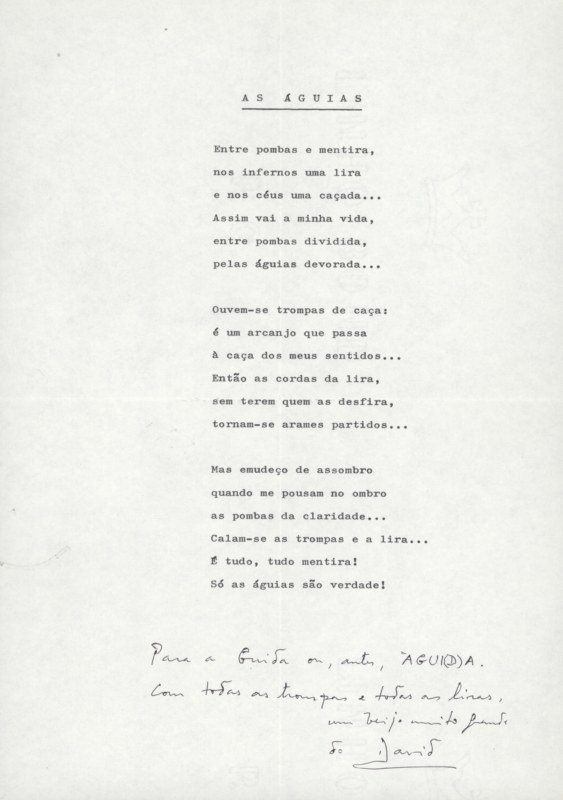
Programa | Program Parreirinha de Alfama, 1956, p.1
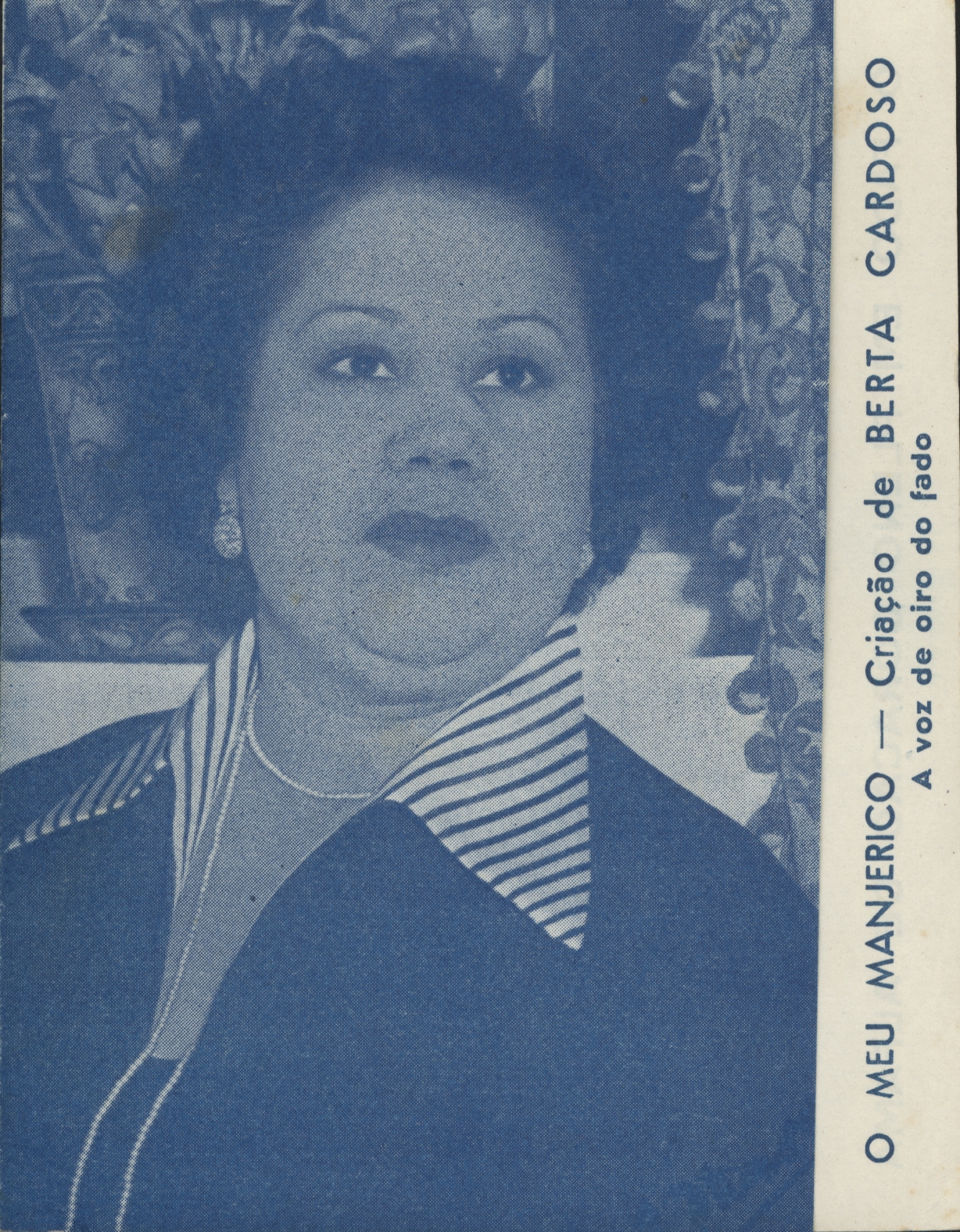
Programa | Program Parreirinha de Alfama, 1956, p.1

Programa | Program Parreirinha de Alfama, 1956, p.2
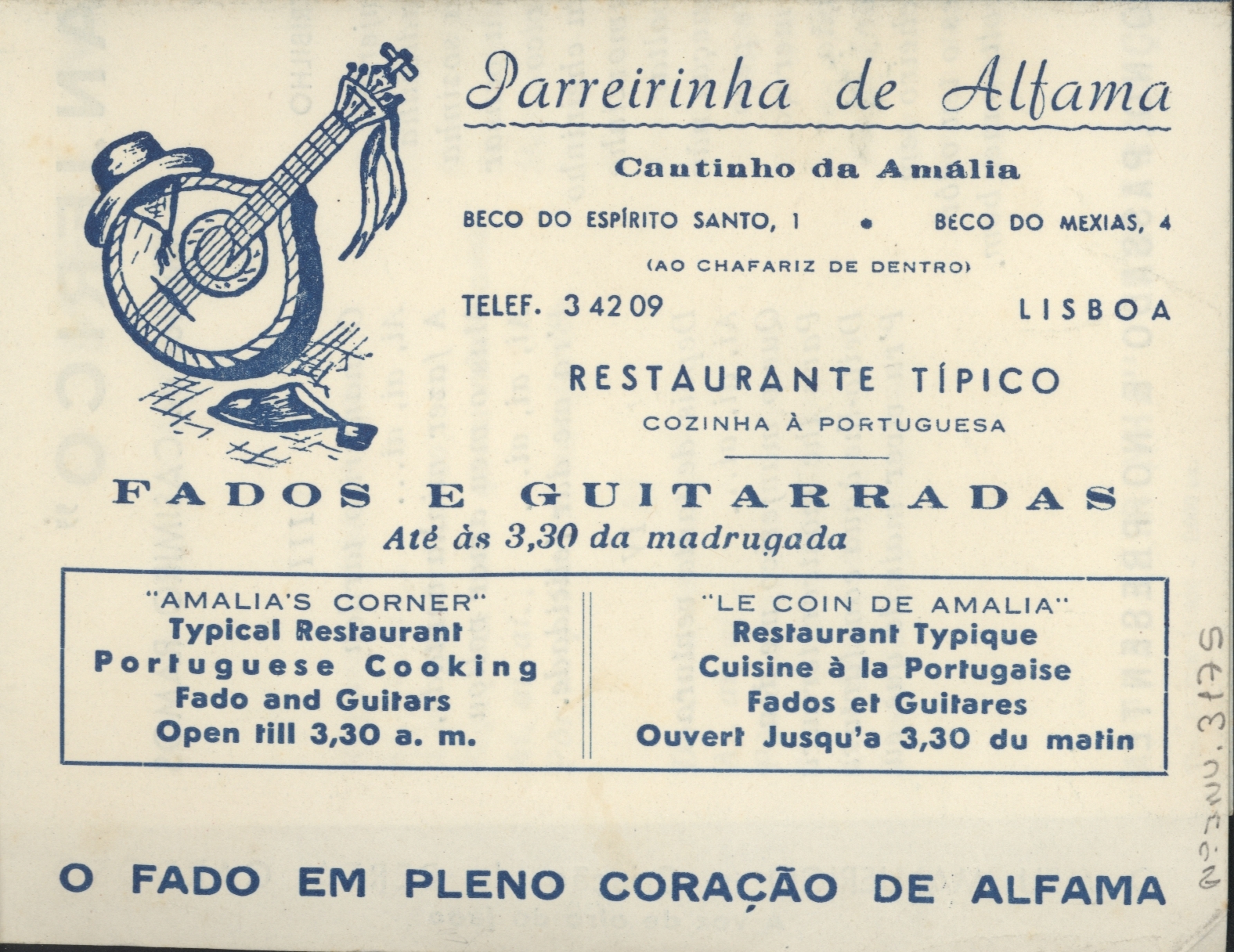
Programa | Program Parreirinha de Alfama, 1956, p.3
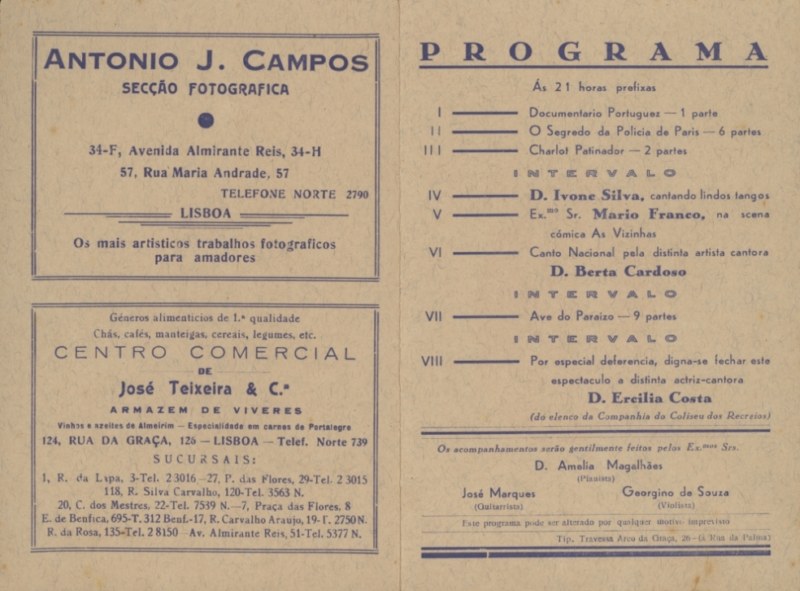
Programa | Program Royal Cine, 1934, p.2

Programa | Program Royal Cine, 1934, p.3
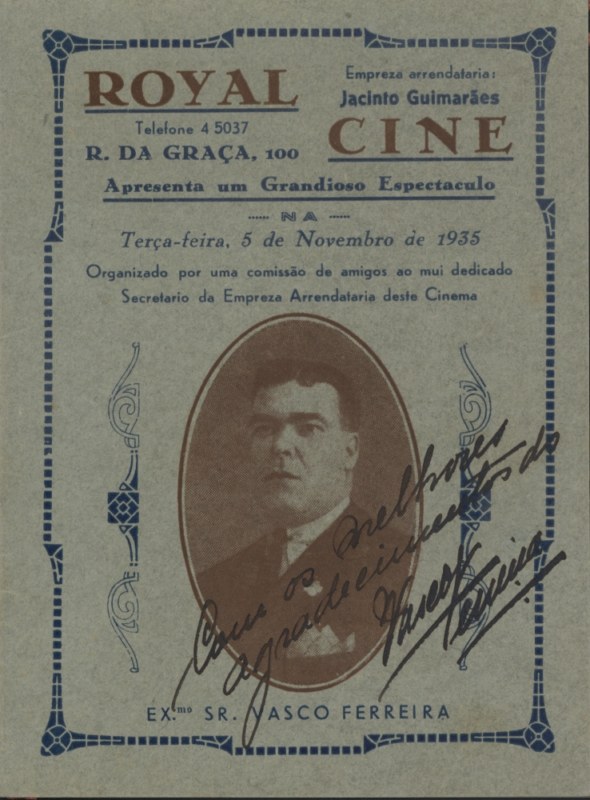
Programa | Program Royal Cine, 1935, p.1
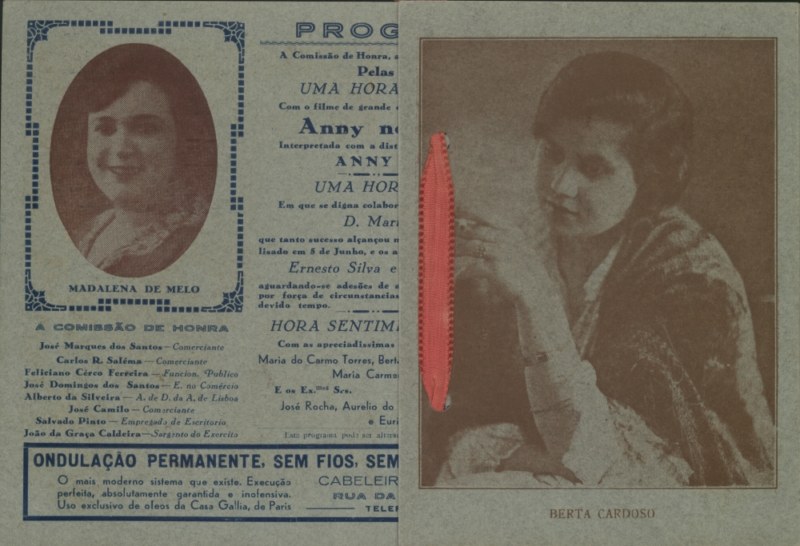
Programa | Program Royal Cine, 1935, p.2
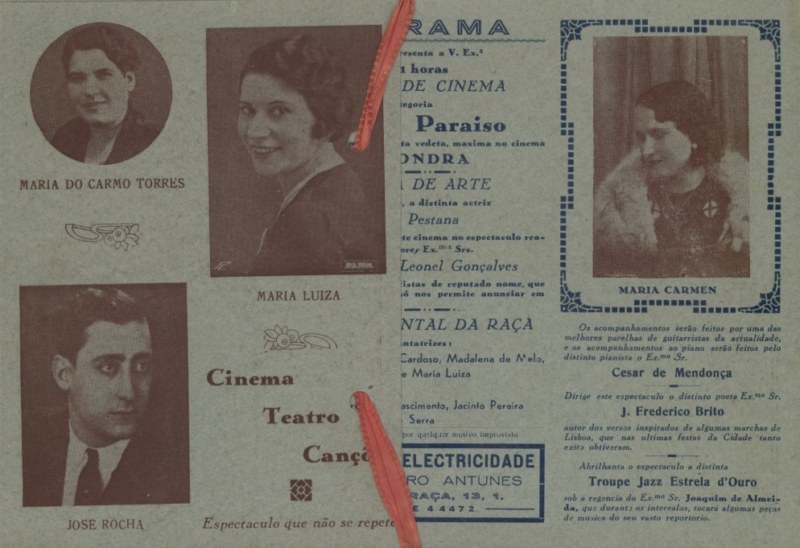
Programa | Program Royal Cine, 1935, p.3
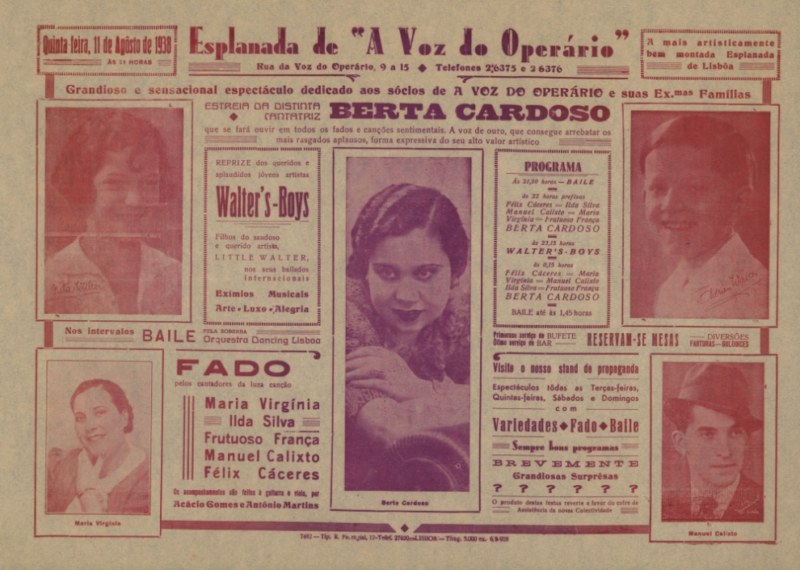
A Voz do Operário, 1938
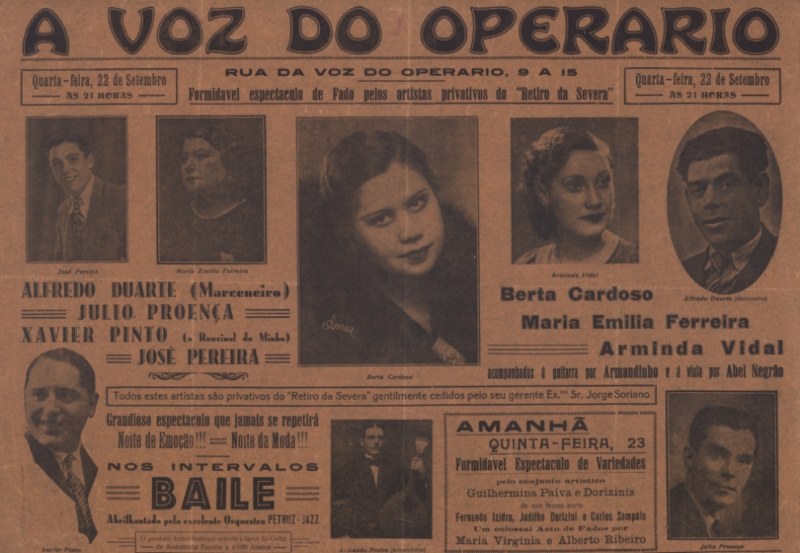
A Voz do Operário, Déc. 1930
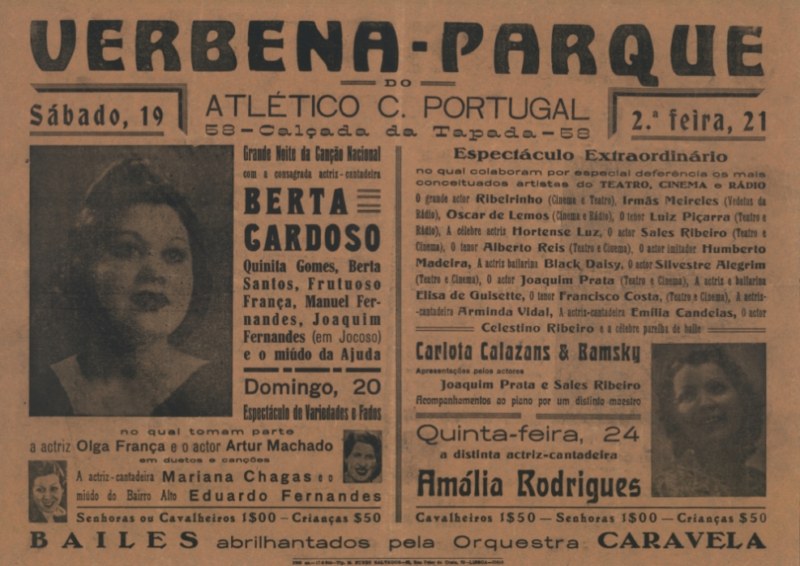
Atlético C. Portugal, 1944
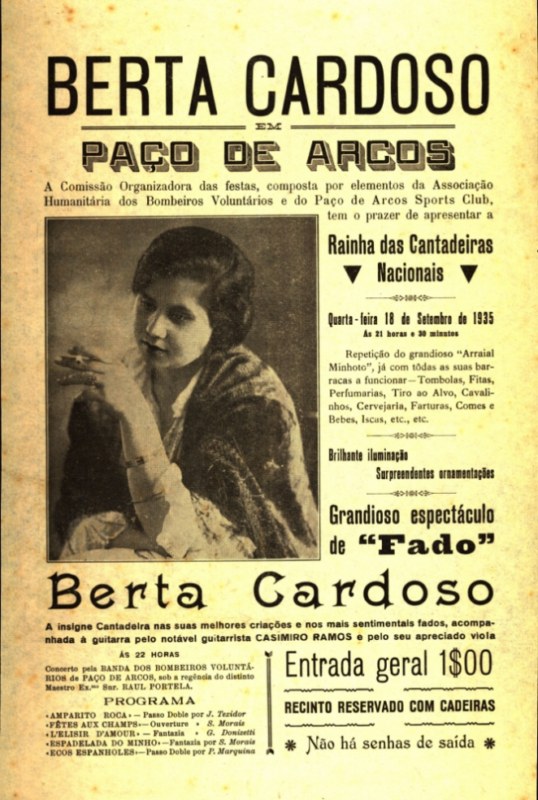
Berta Cardoso, Paço de Arcos, 1935
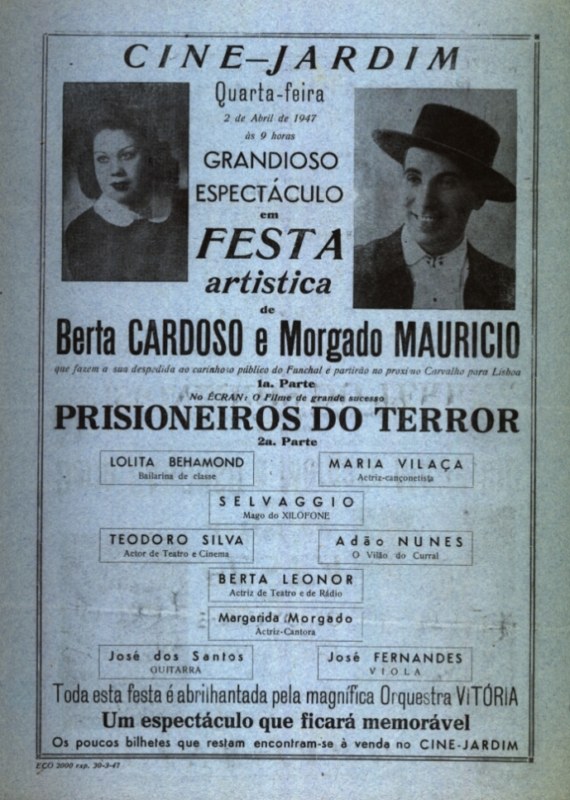
Cine Jardim, Funchal, Madeira, 1947
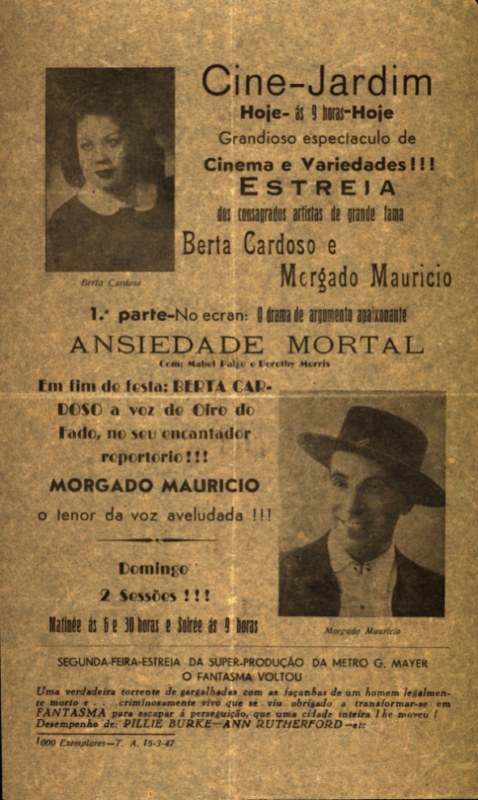
Cine Jardim, Funchal, Madeira, 1947
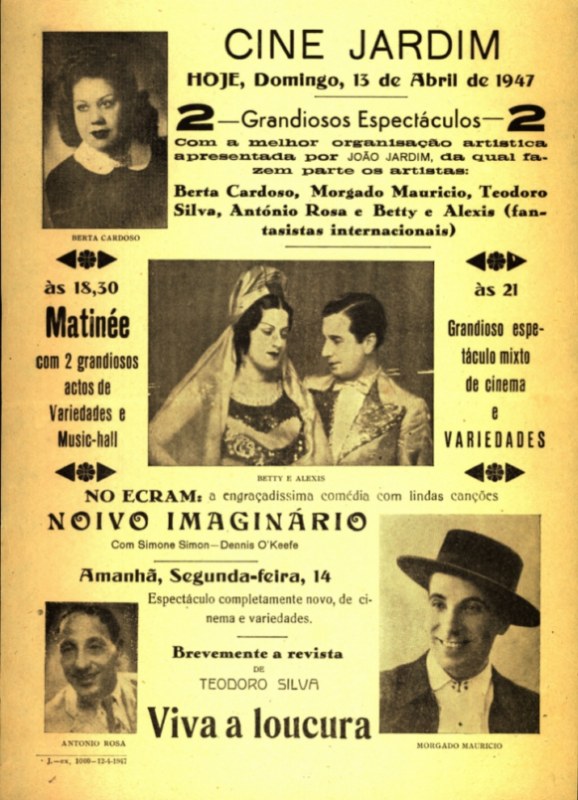
Cine Jardim, Funchal, Madeira, 1947

Clube Recreativo Almeida Garrett, 1935
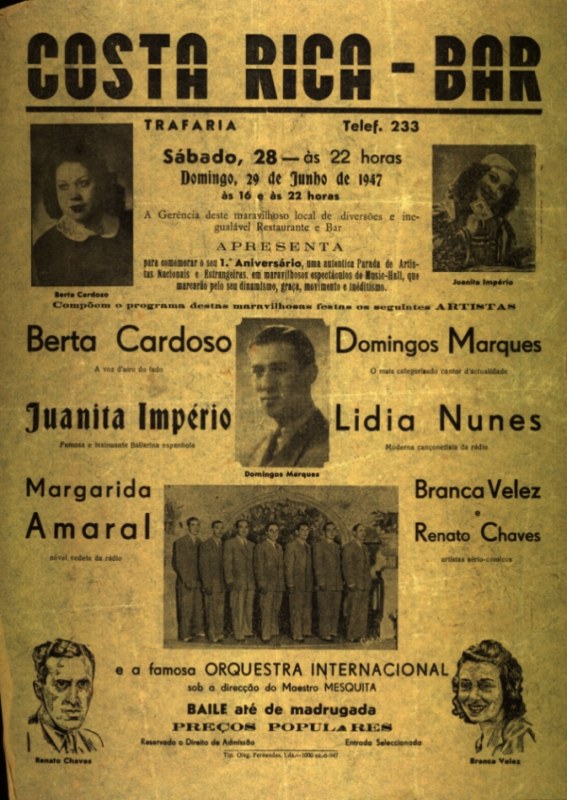
Costa Rica - Bar, 1947

Esplanada da Praça de Toiros, Évora, 1947
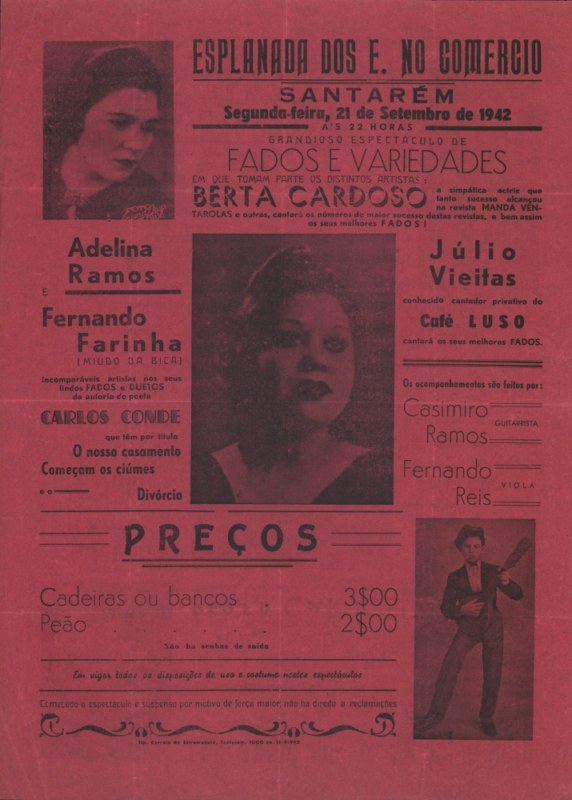
Esplanada dos E. no Comércio, Santarém, 1942
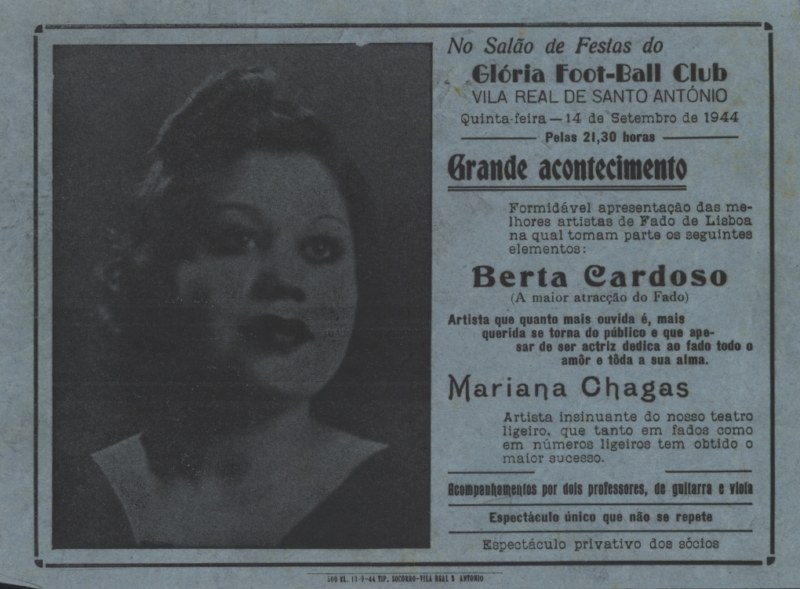
Glória Foot-Ball Club, 1944
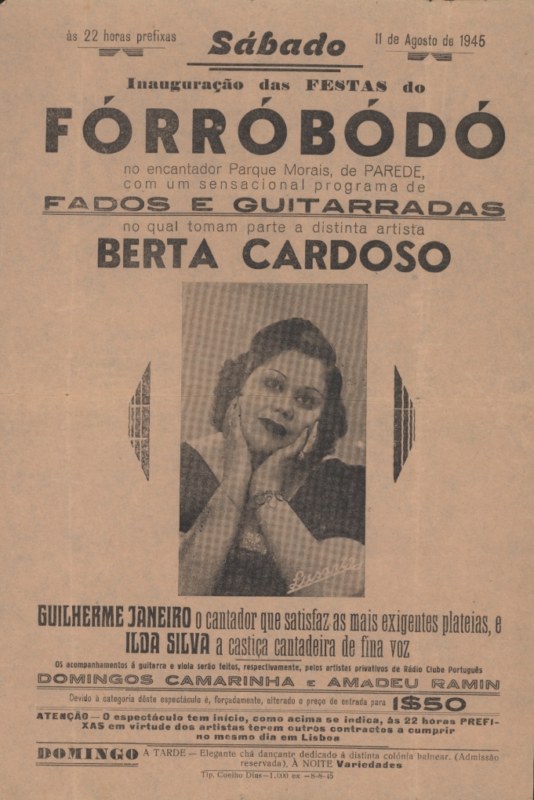
Parque Morais, Festas do | Festival Forróbódó, Parede, 1945
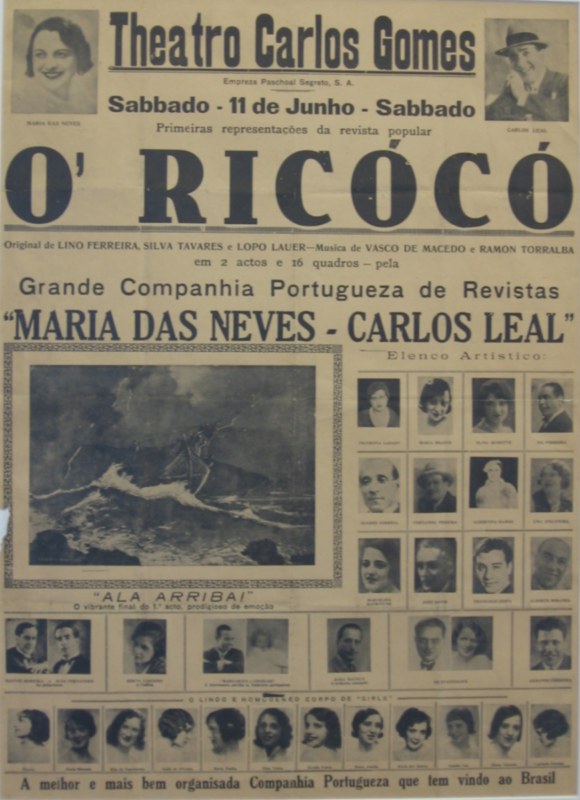
Teatro Carlos Gomes, Revista | Vaudeville Ó Ricócó, Déc. 1920

Teatro de Variedades, Parque Mayer, 1947
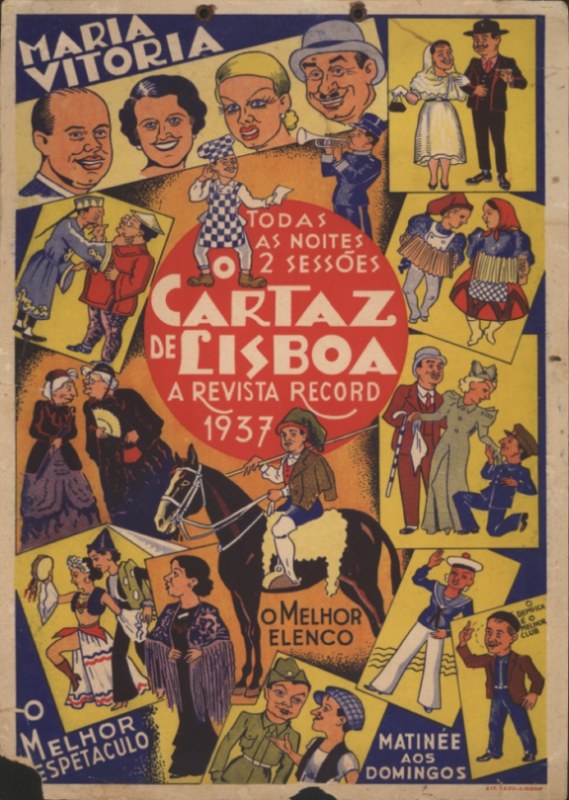
Teatro Maria Vitória, Revista | Vaudeville Cartaz de Lisboa, 1937
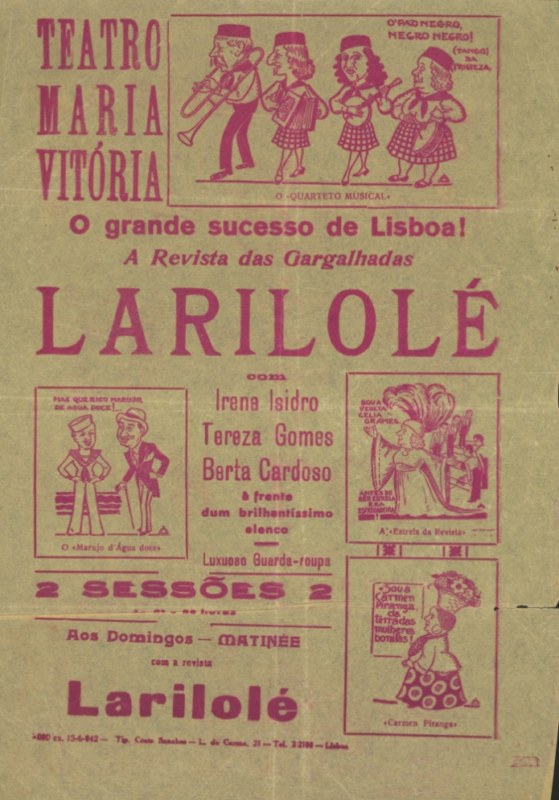
Teatro Maria Vitória, Revista | Vaudeville Larilolé, 1942
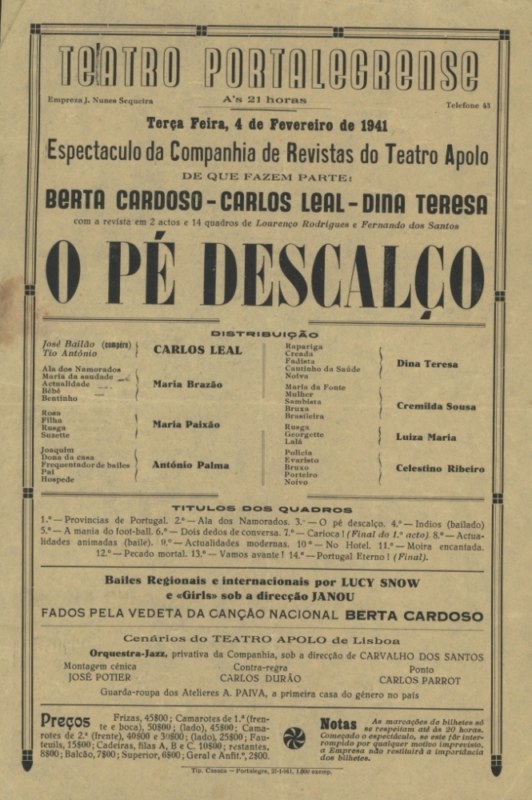
Teatro Portalegrense, Revista | Vaudeville O Pé Descalço, 1941
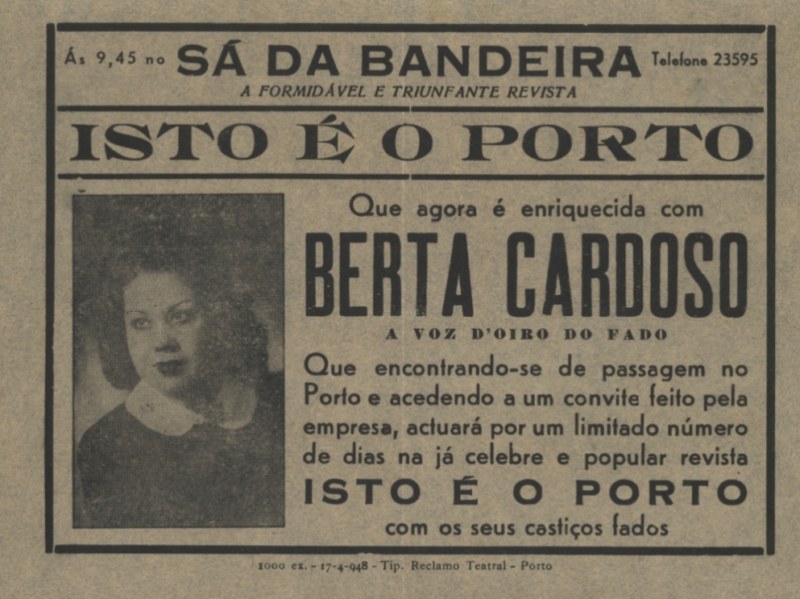
Teatro Sá da Bandeira, Revista | Vaudeville Isto é o Porto, 1948
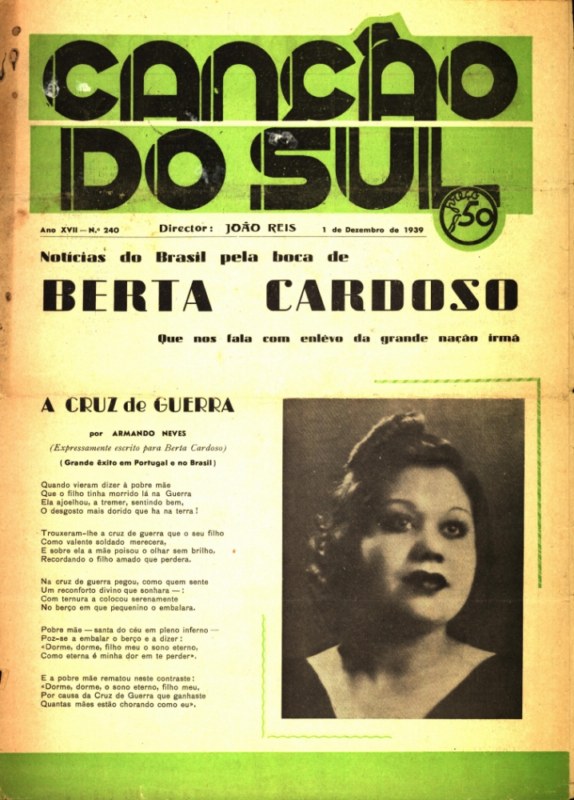
Canção do Sul, 1 de Dezembro | December 1939
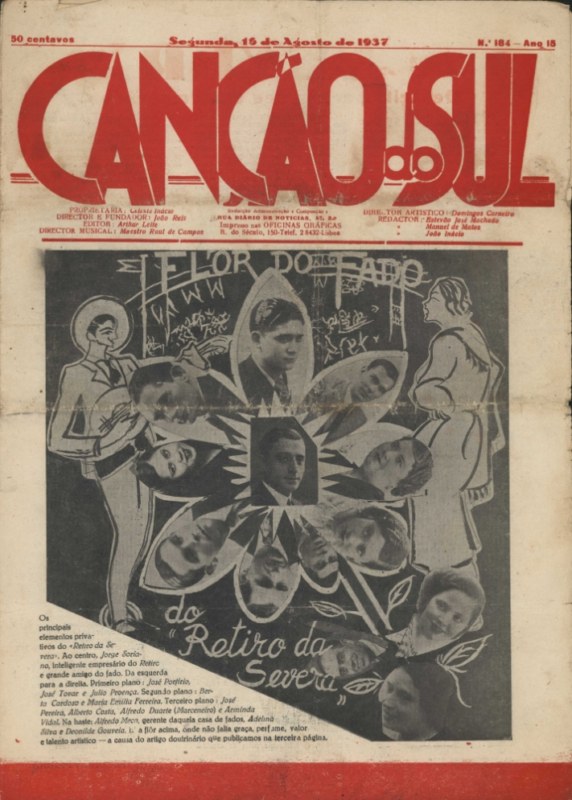
Canção do Sul, 16 de Agosto | August 1937
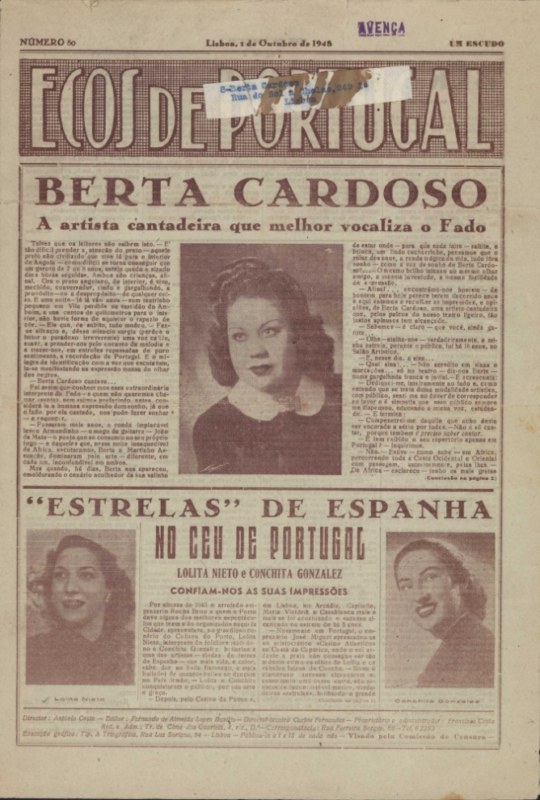
Ecos de Portugal, 1 de Outubro | October 1948
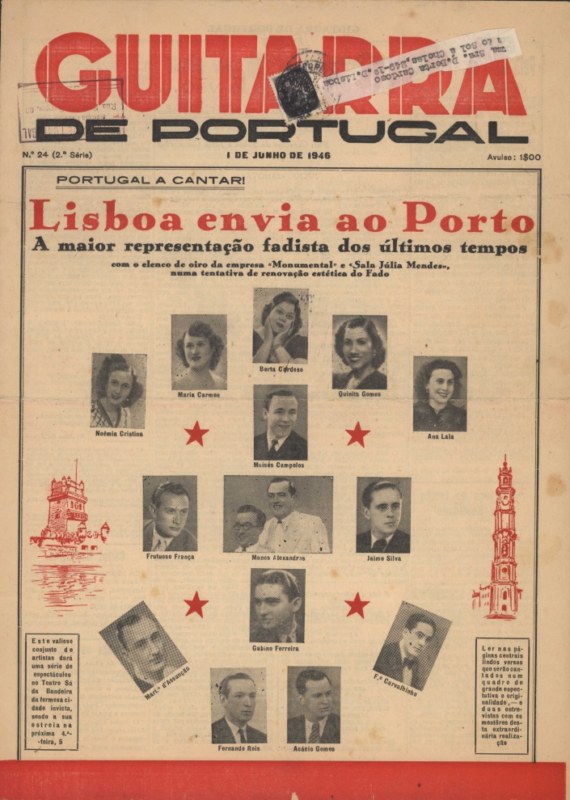
Guitarra de Portugal, 1 de Junho | June 1946
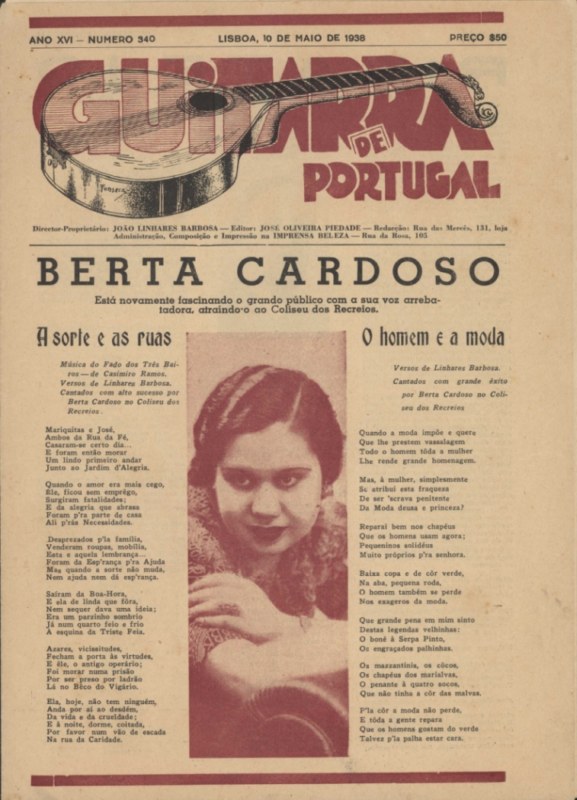
Guitarra de Portugal, 10 de Maio | May 1938
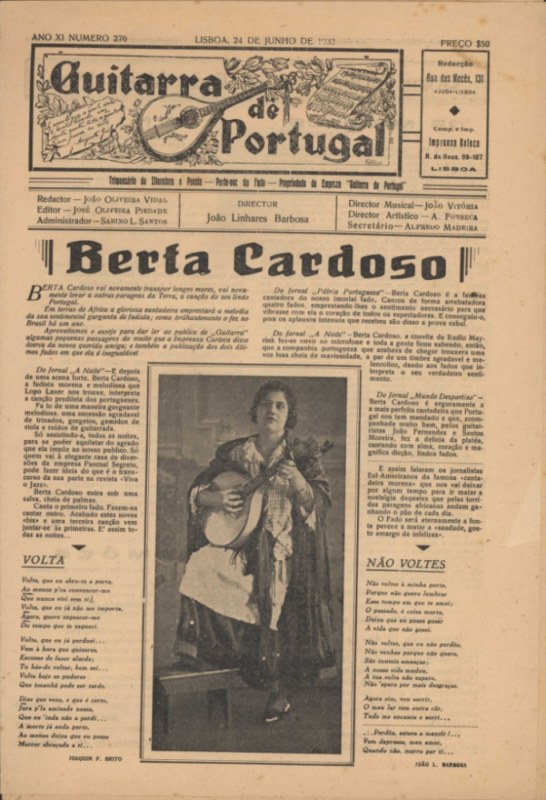
Guitarra de Portugal, 24 de Junho | June 1933
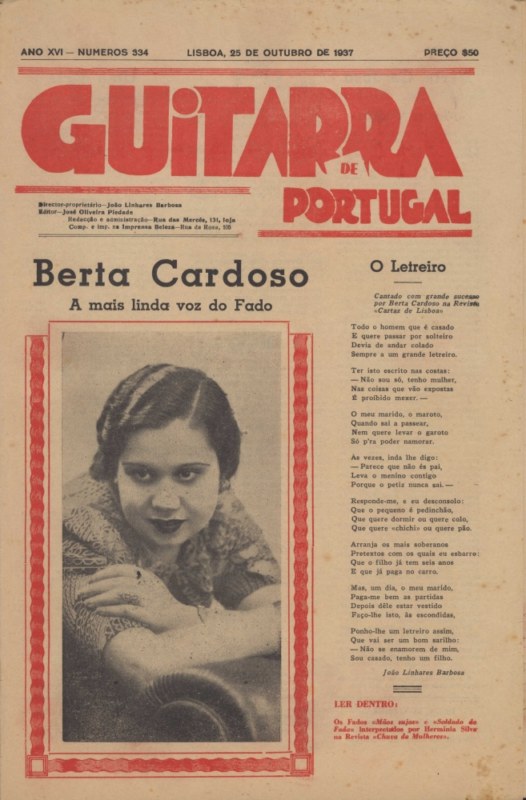
Guitarra de Portugal, 25 de Outubro | October 1937
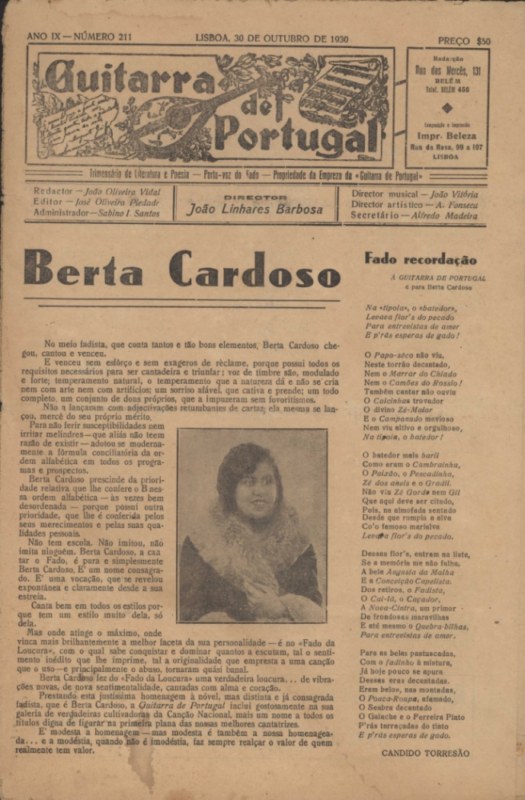
Guitarra de Portugal, 30 de Outubro | October 1930
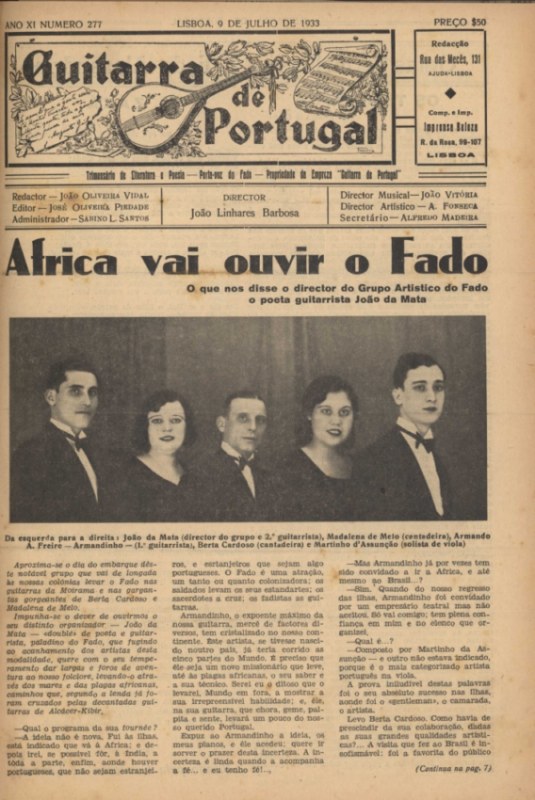
Guitarra de Portugal, 9 de Julho | July 1933
